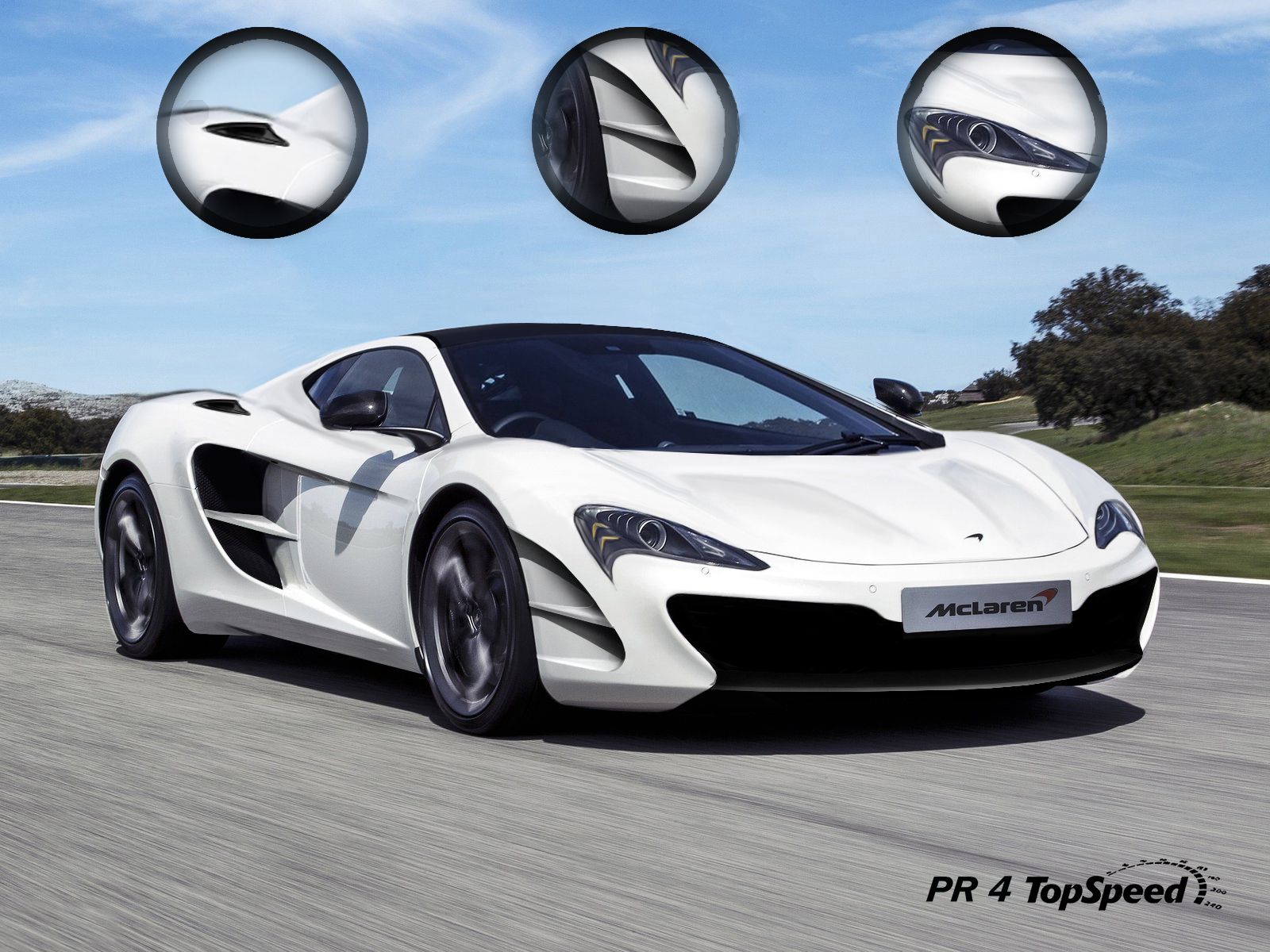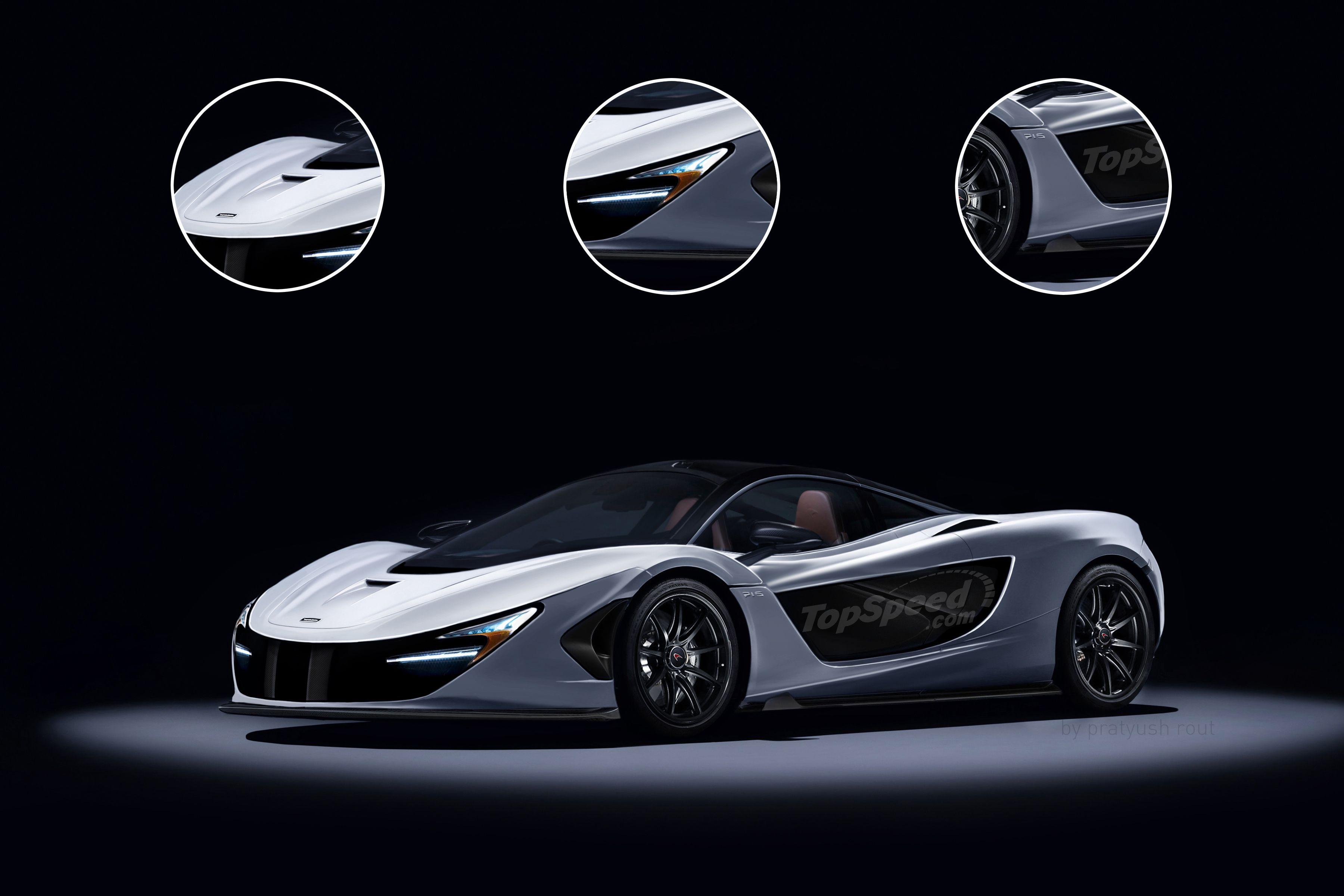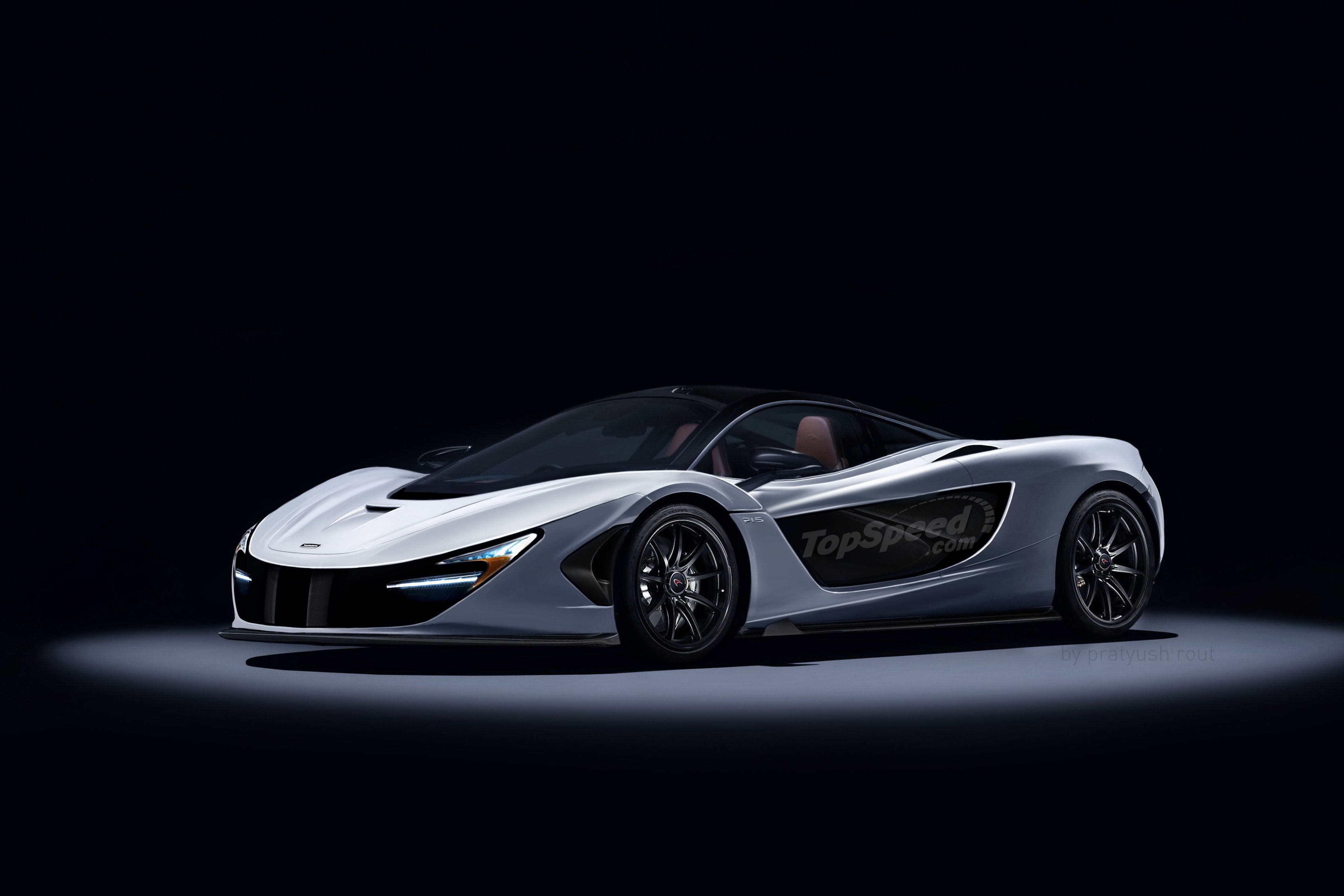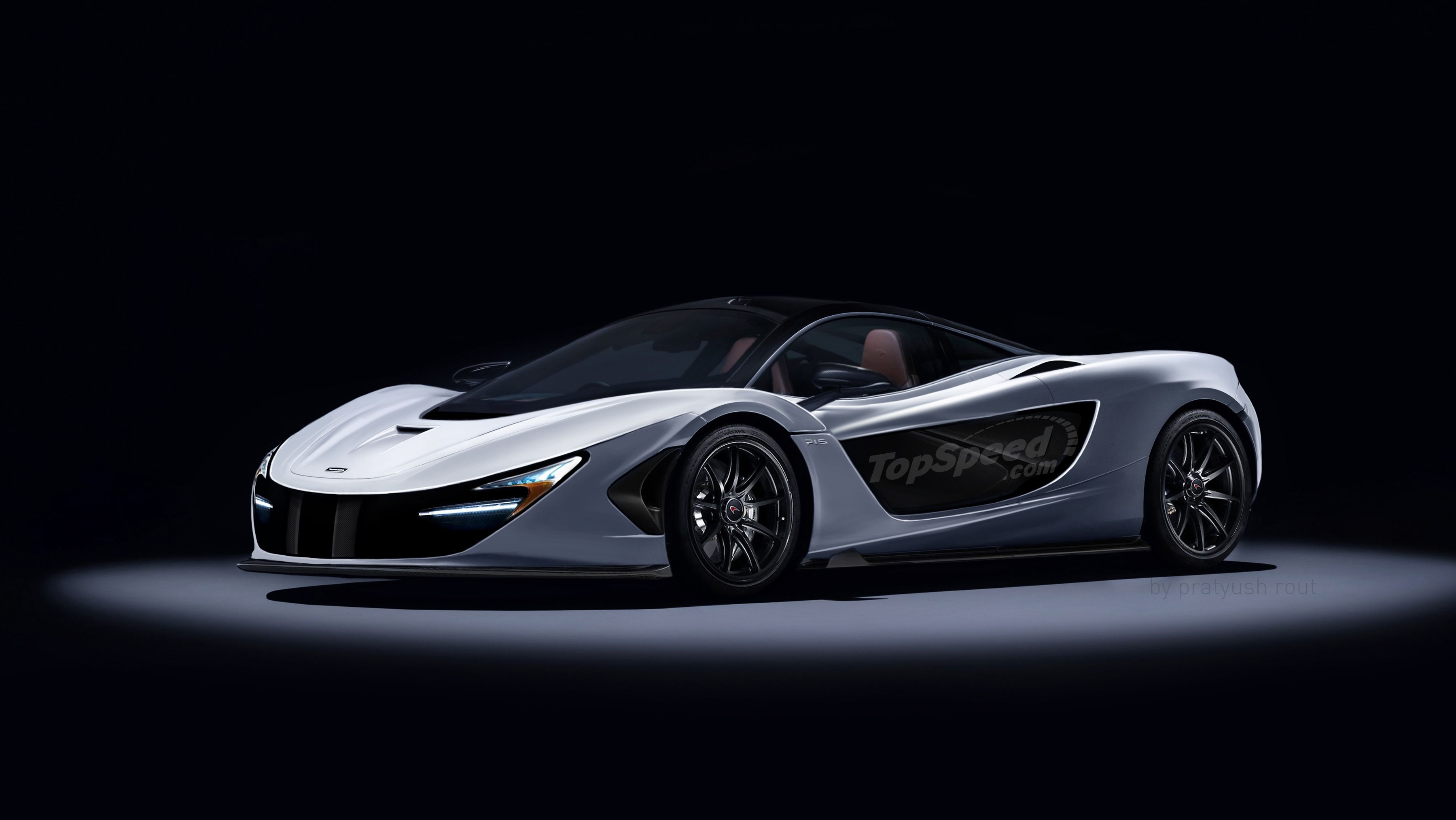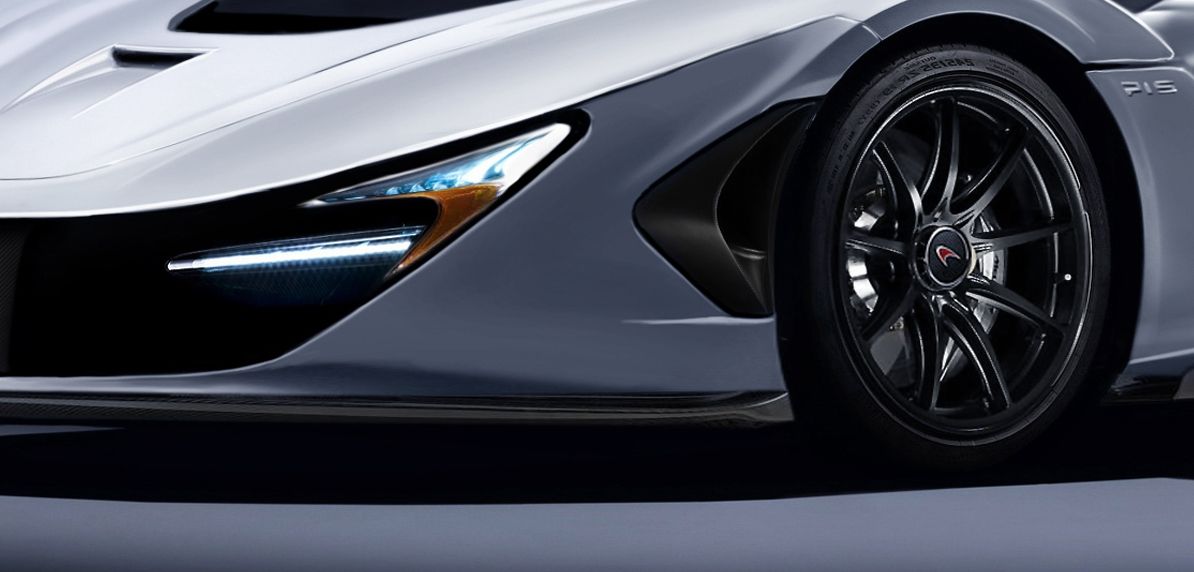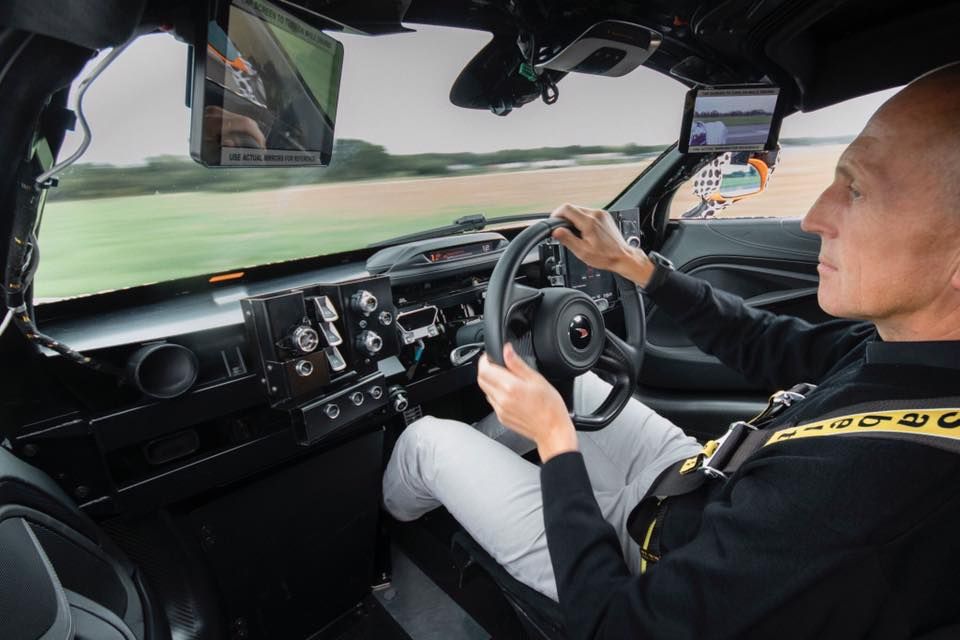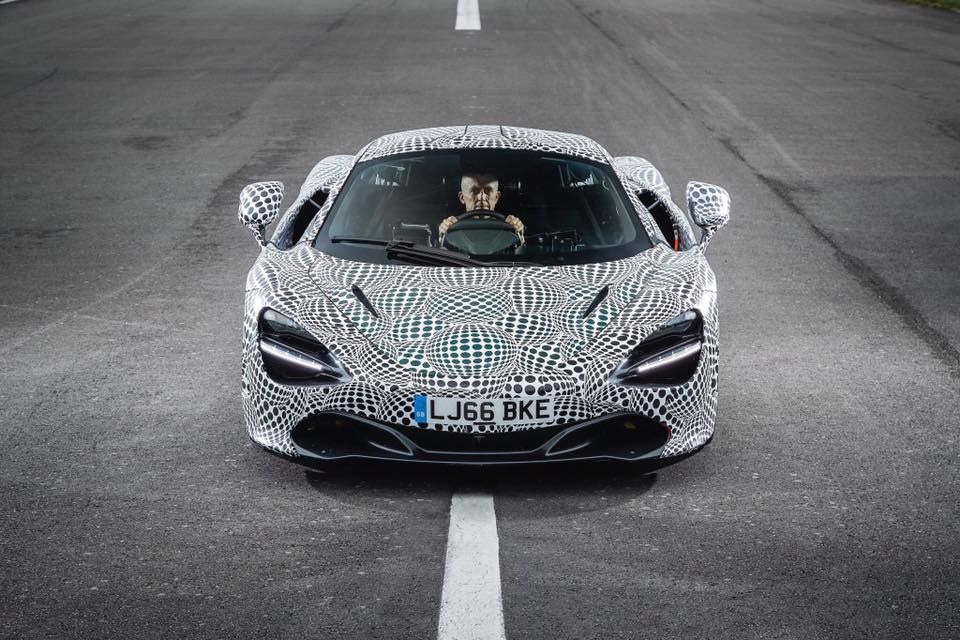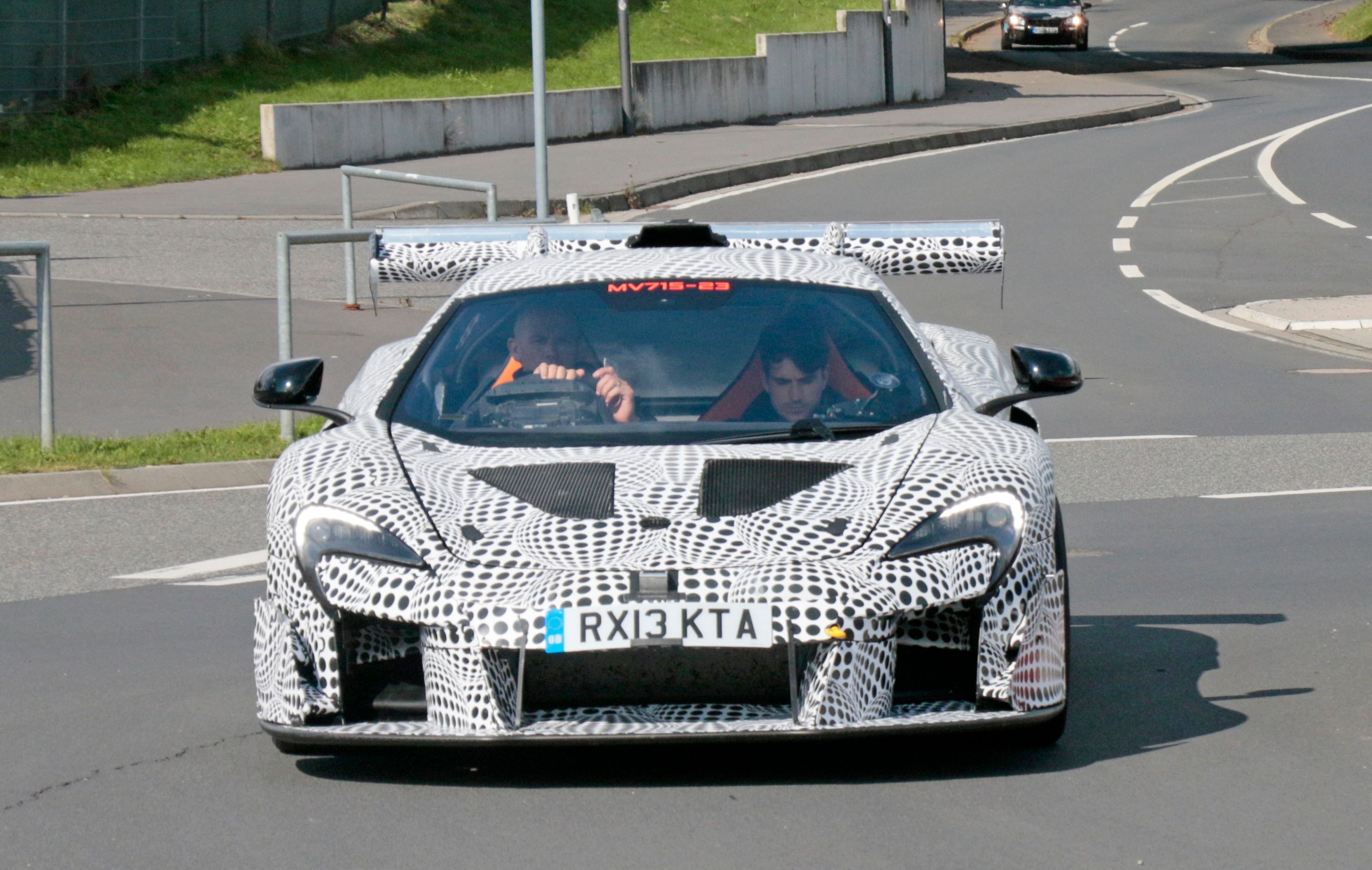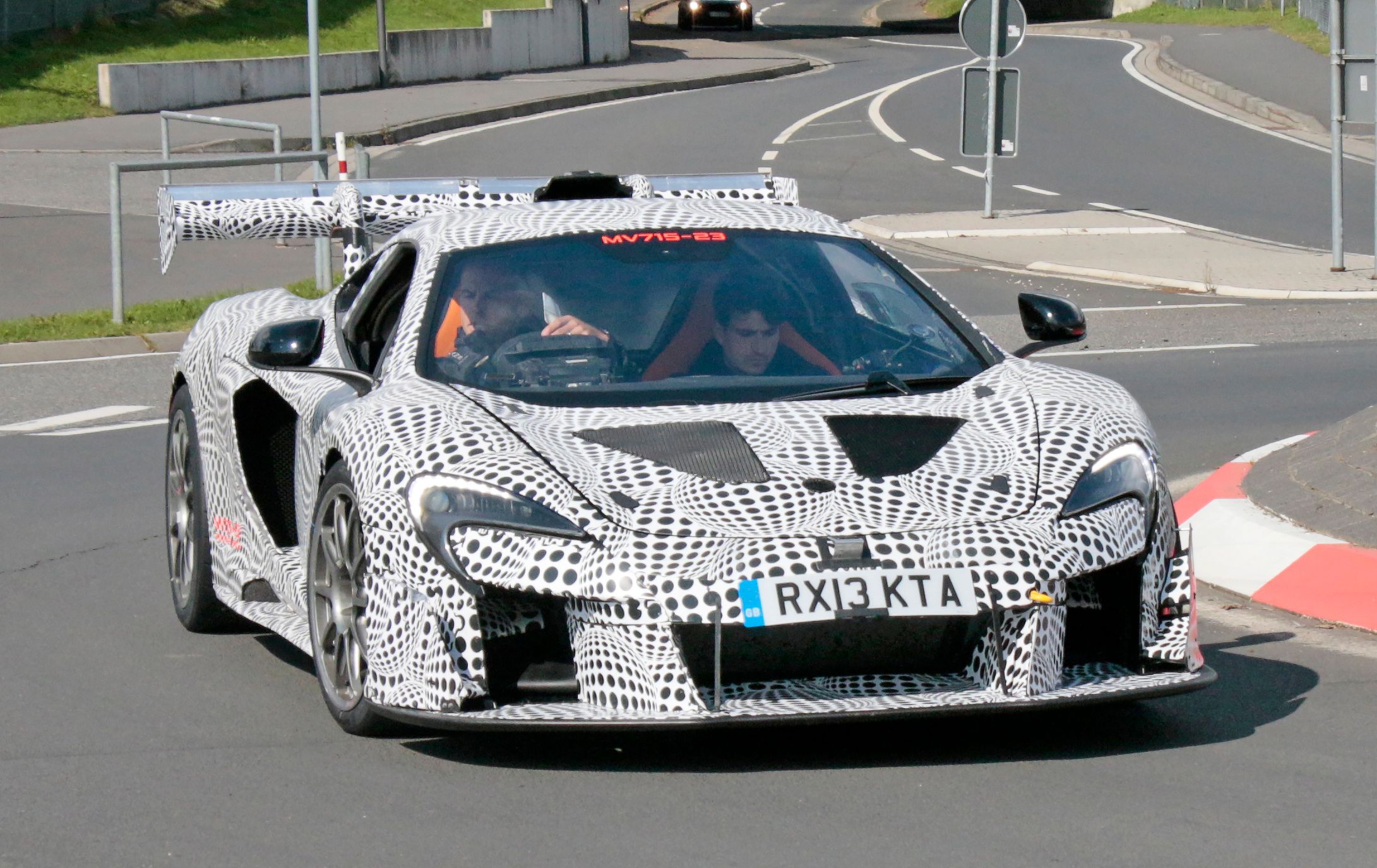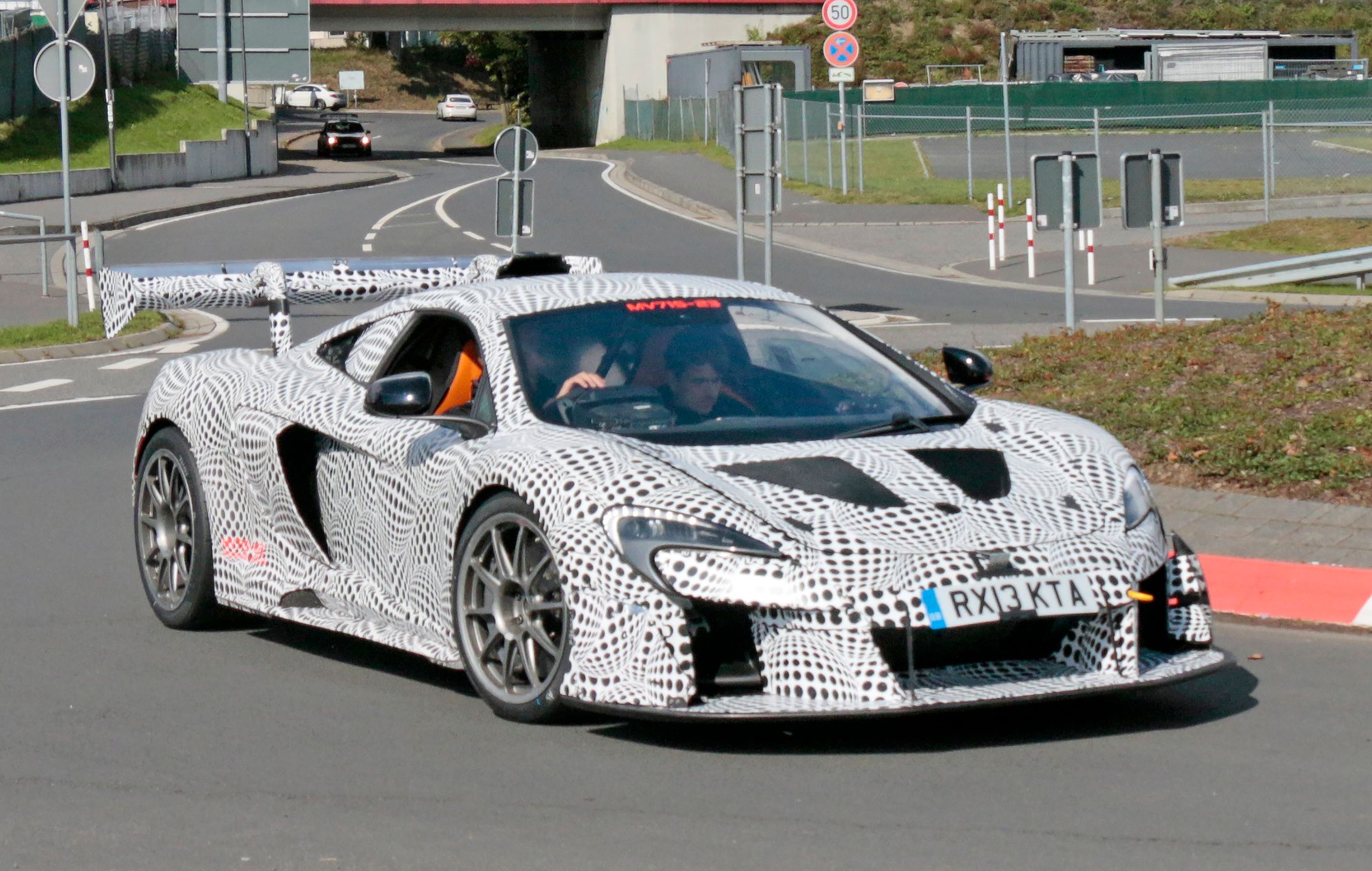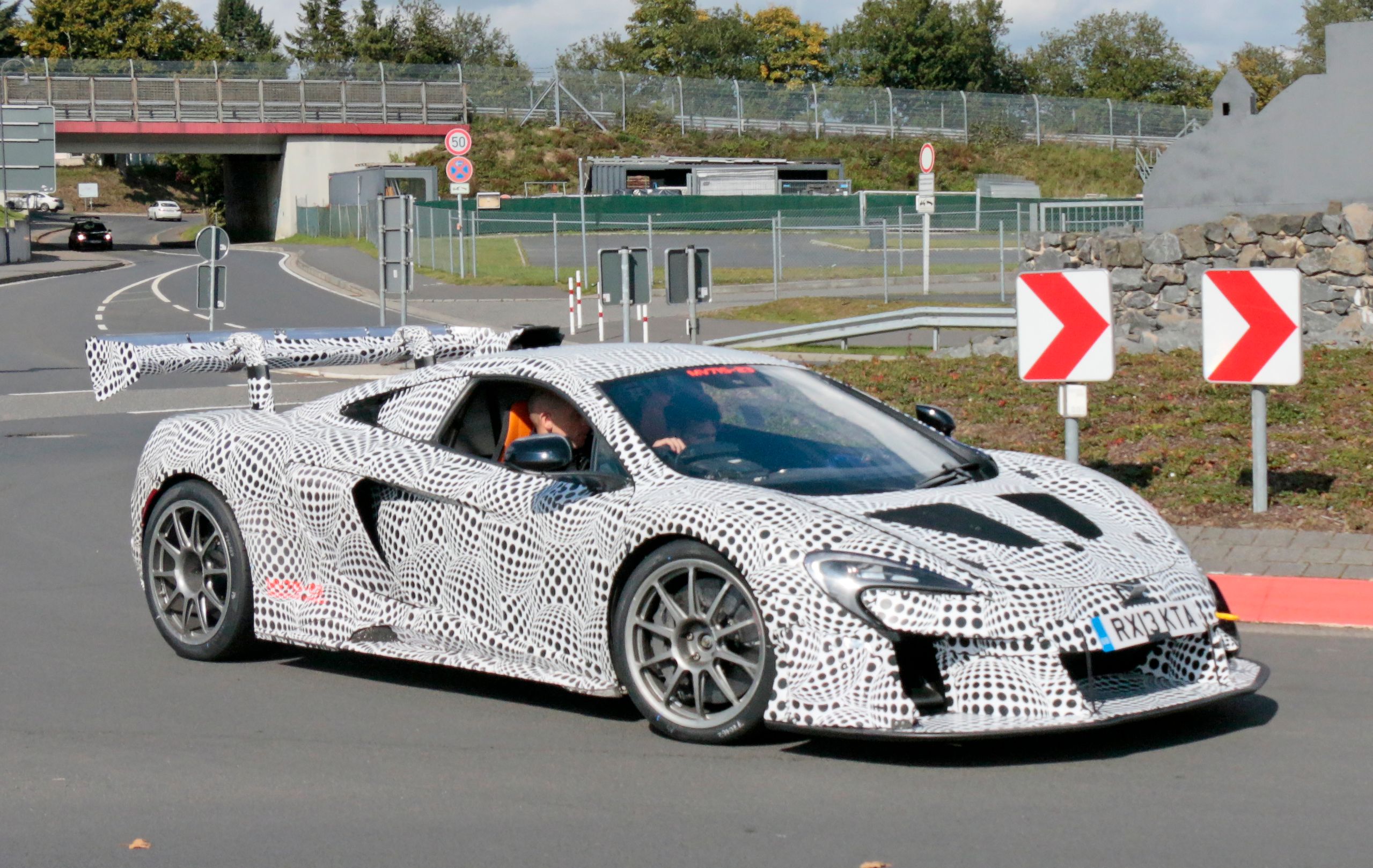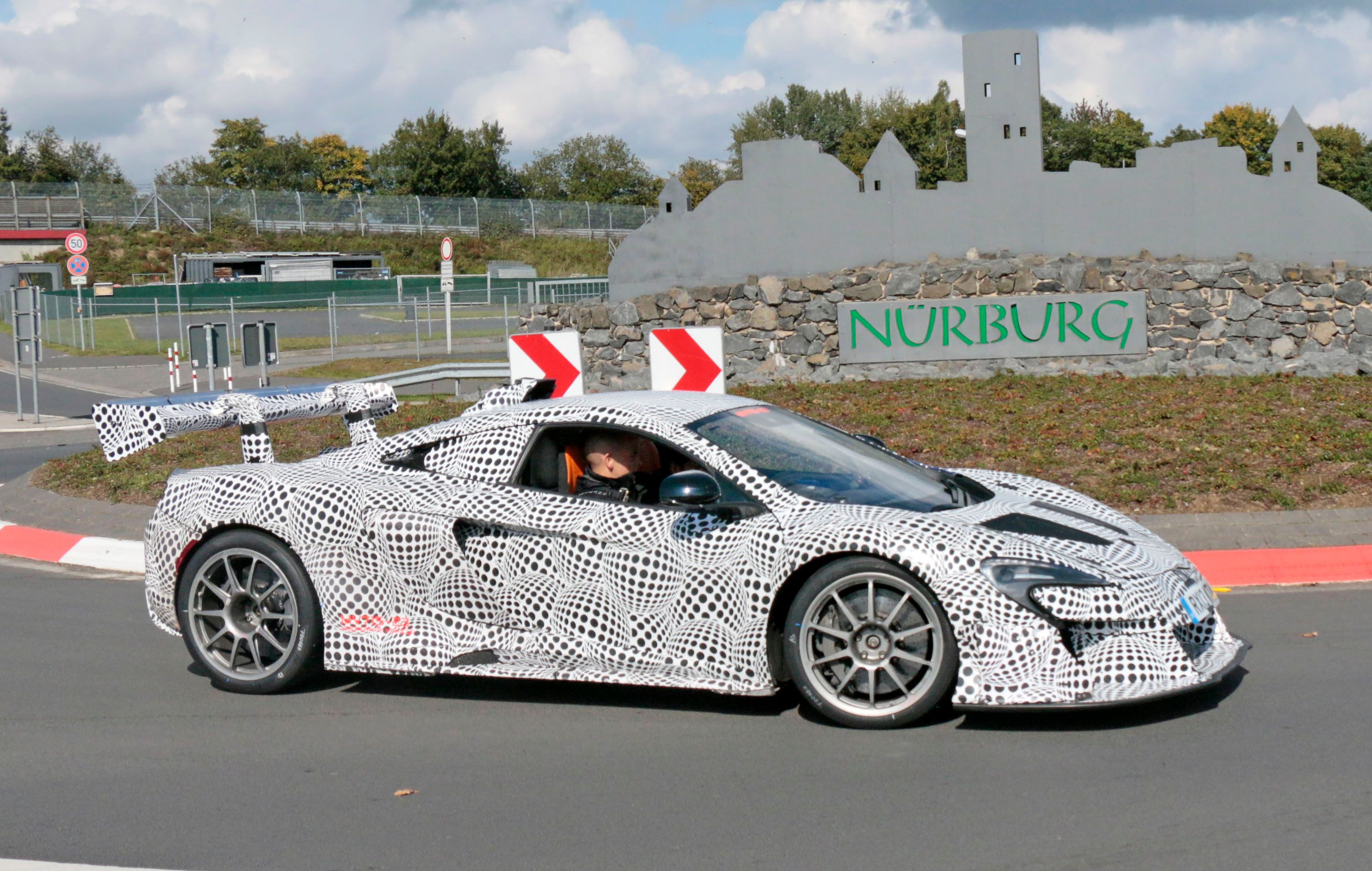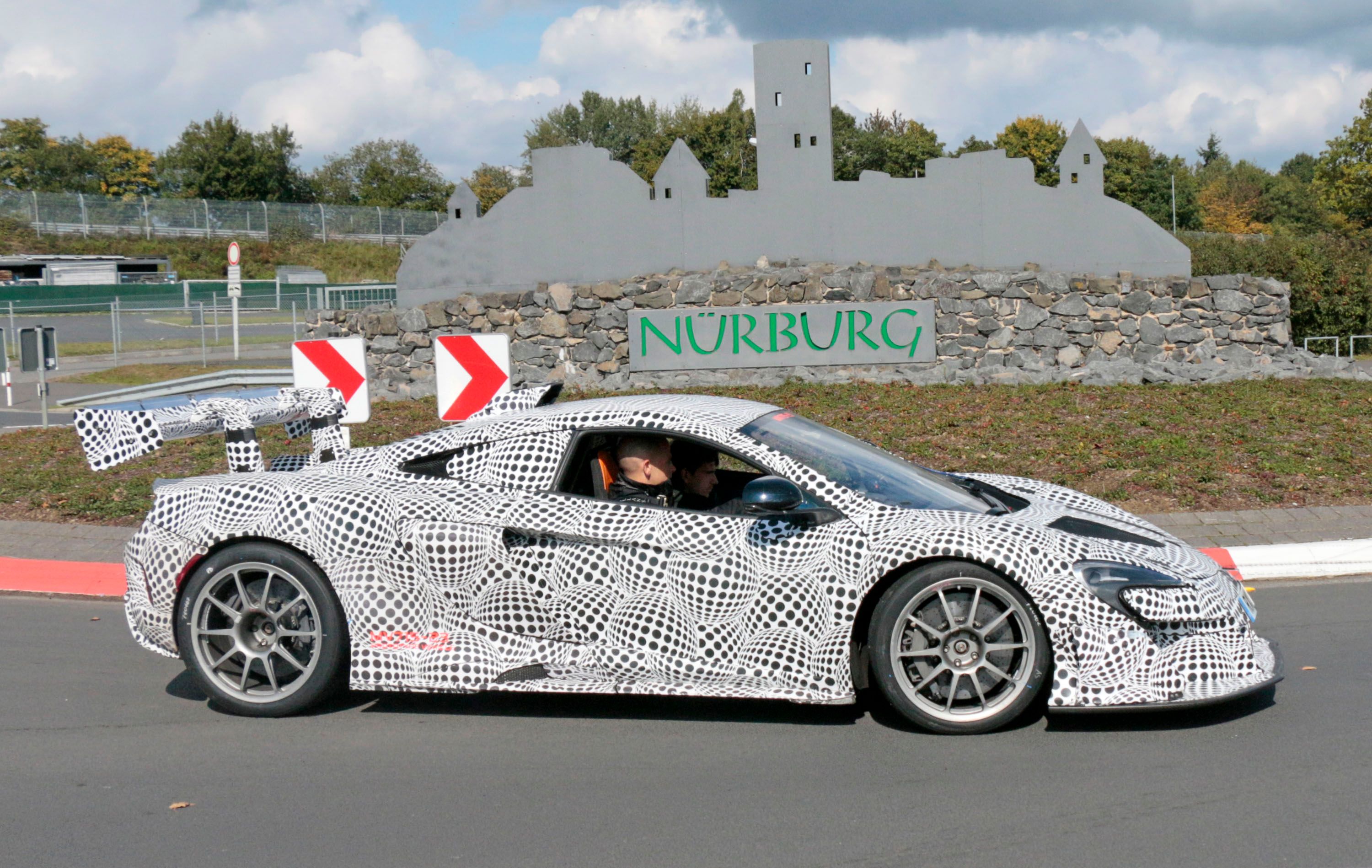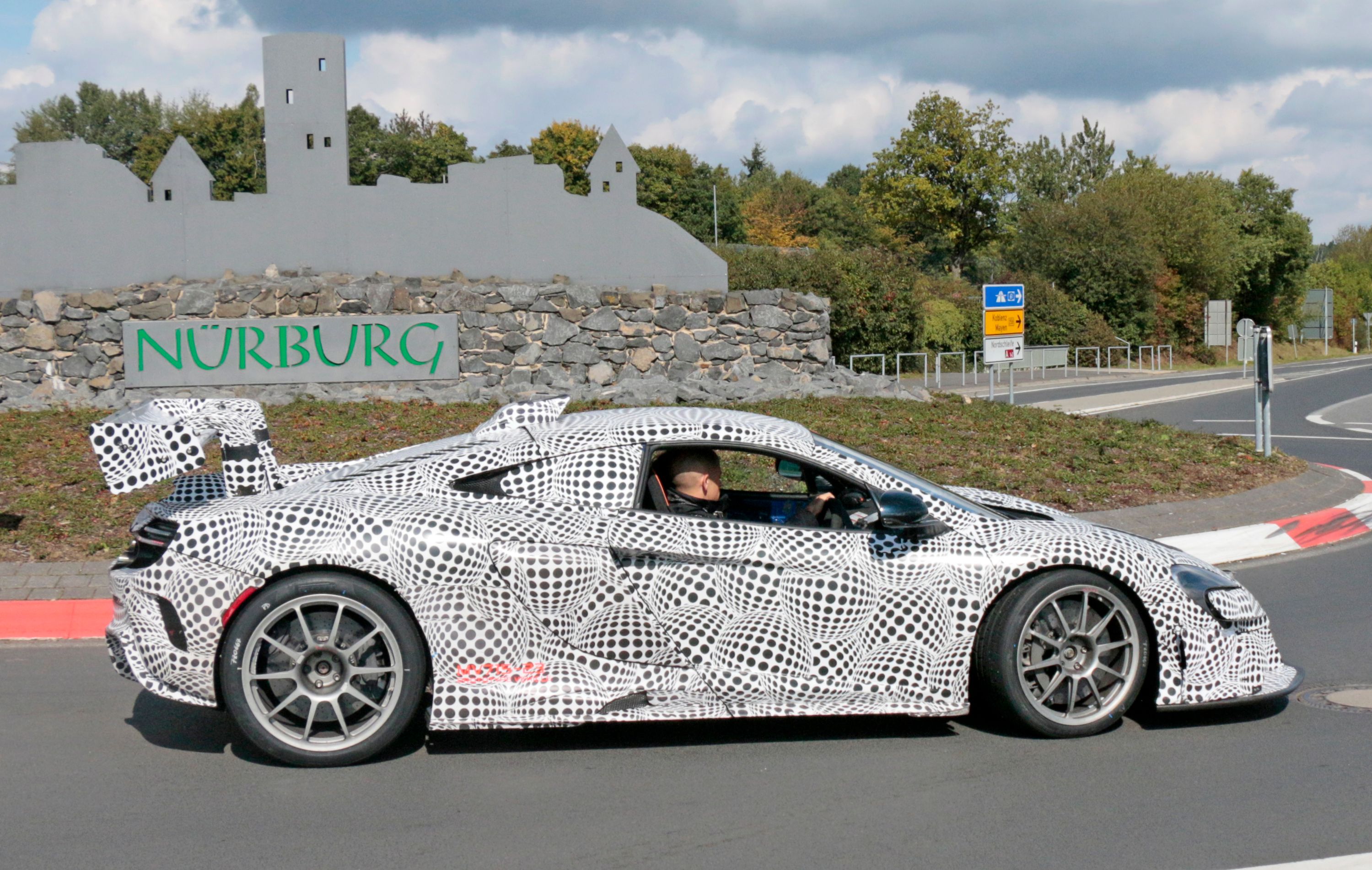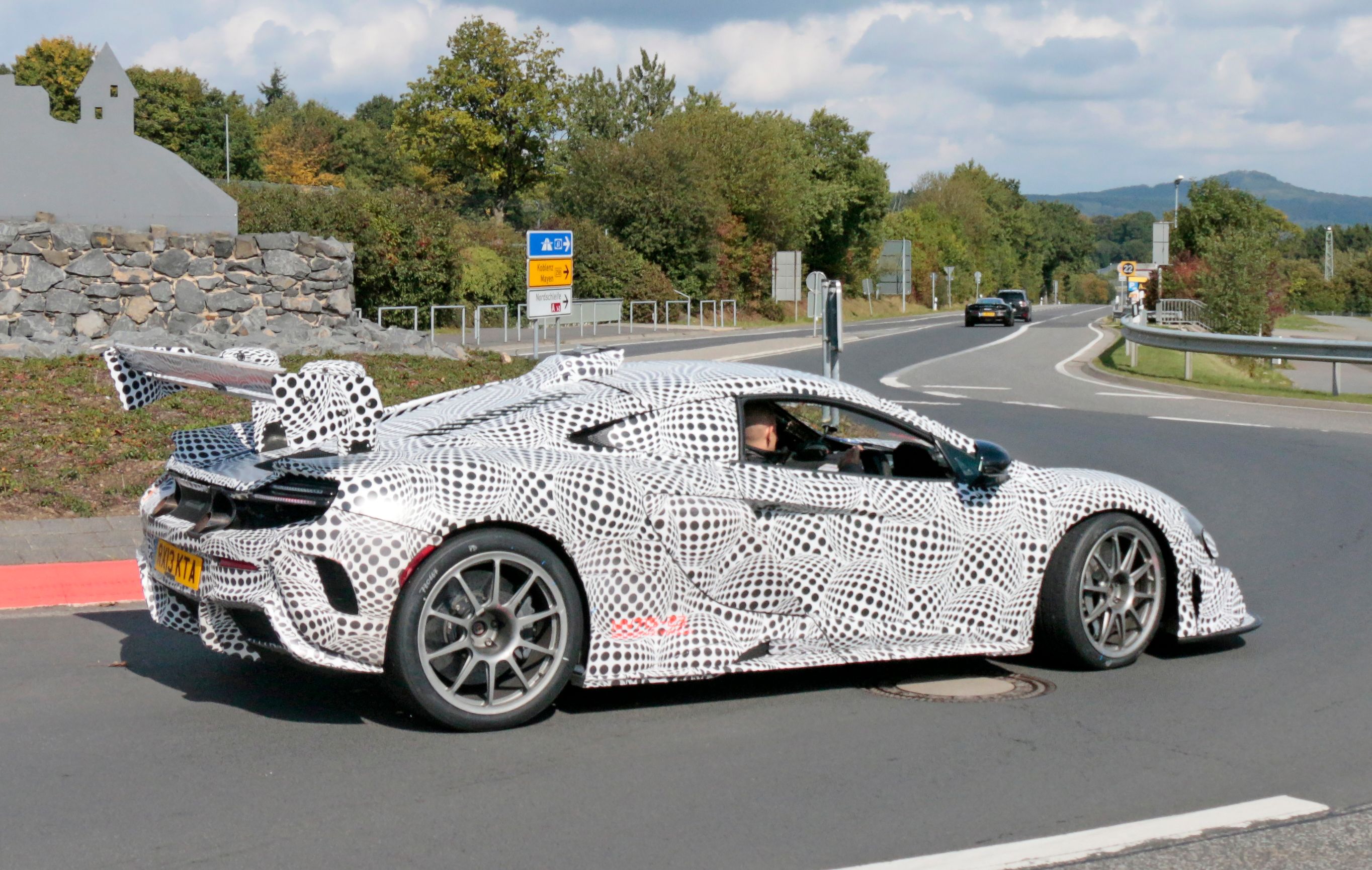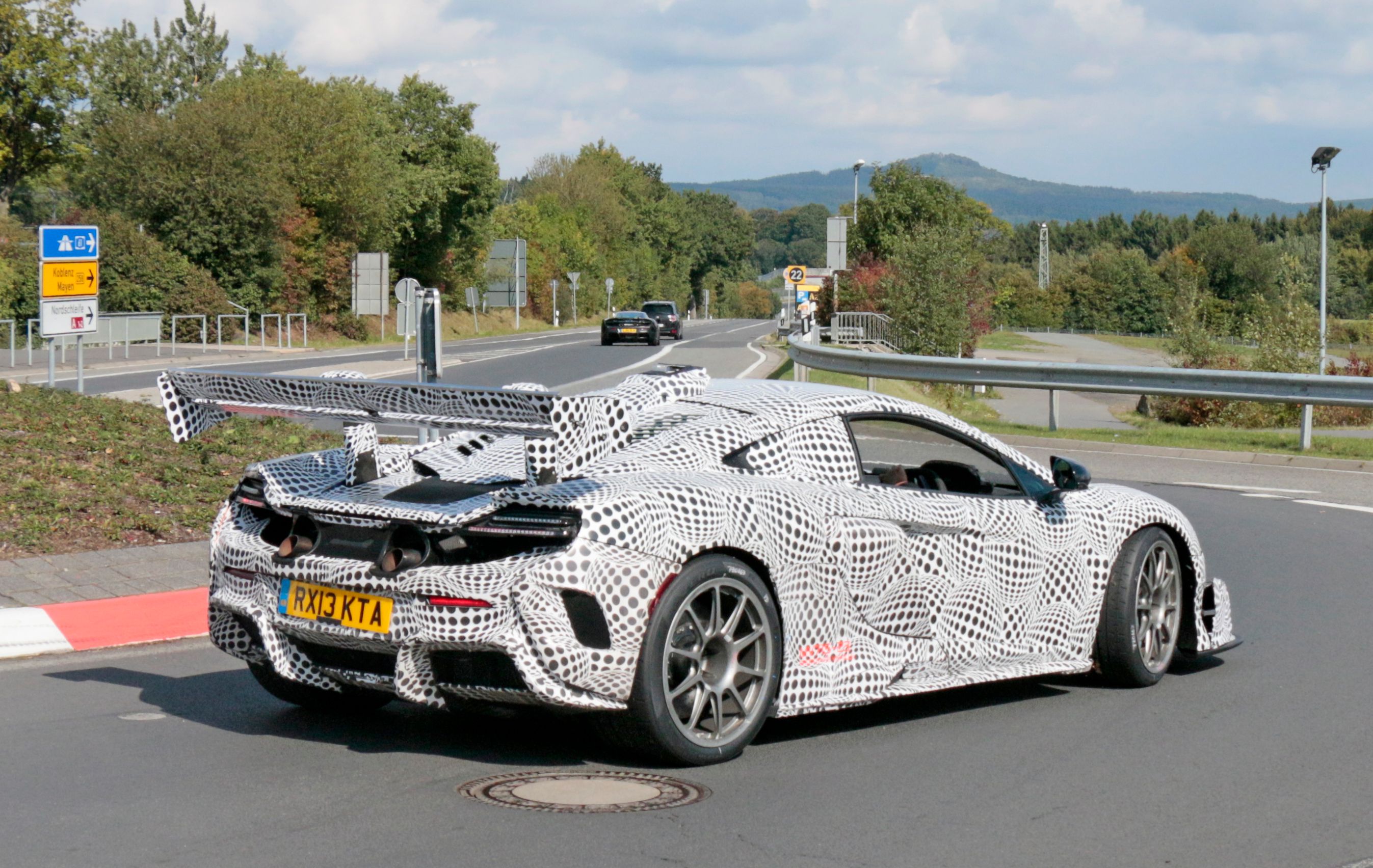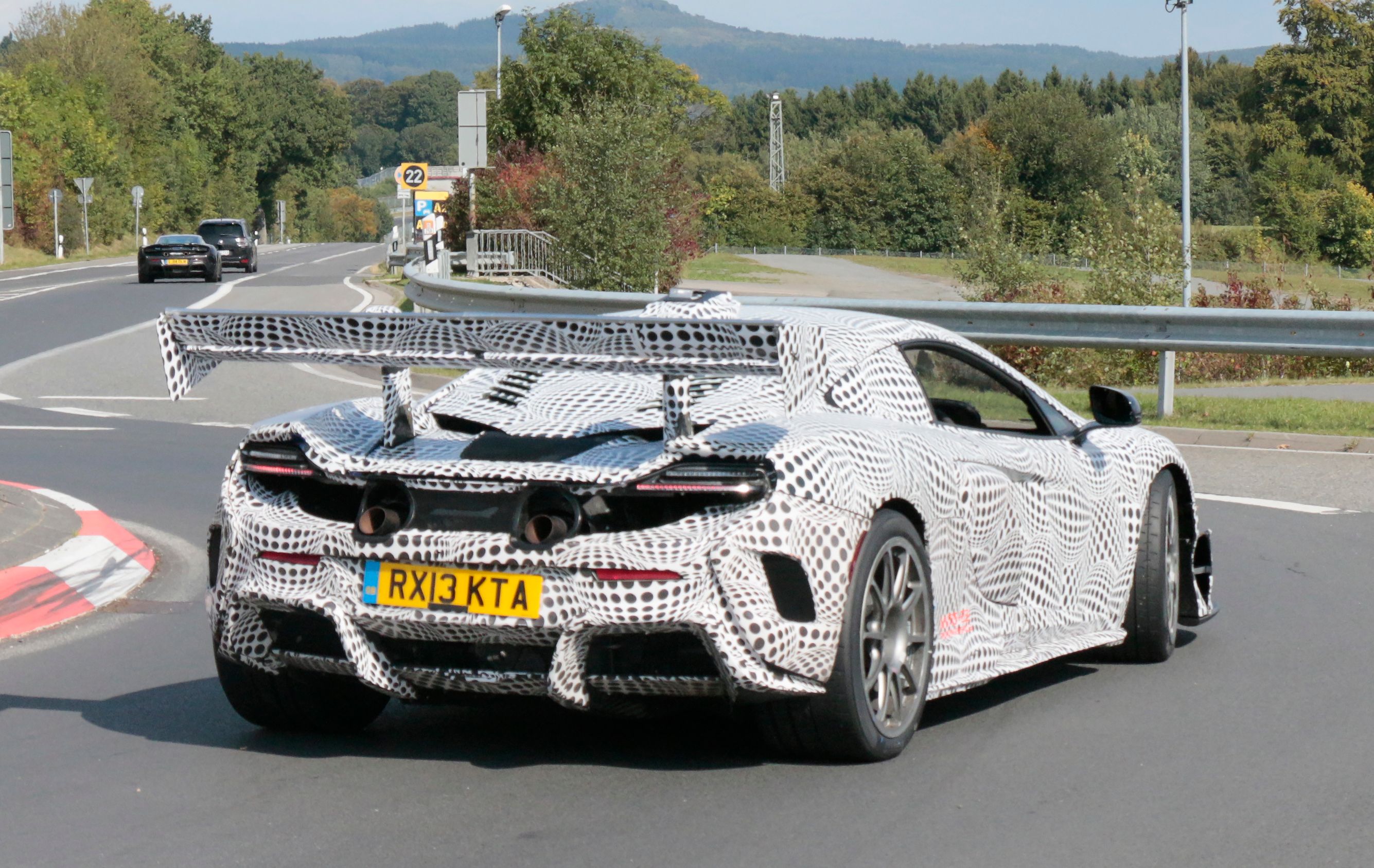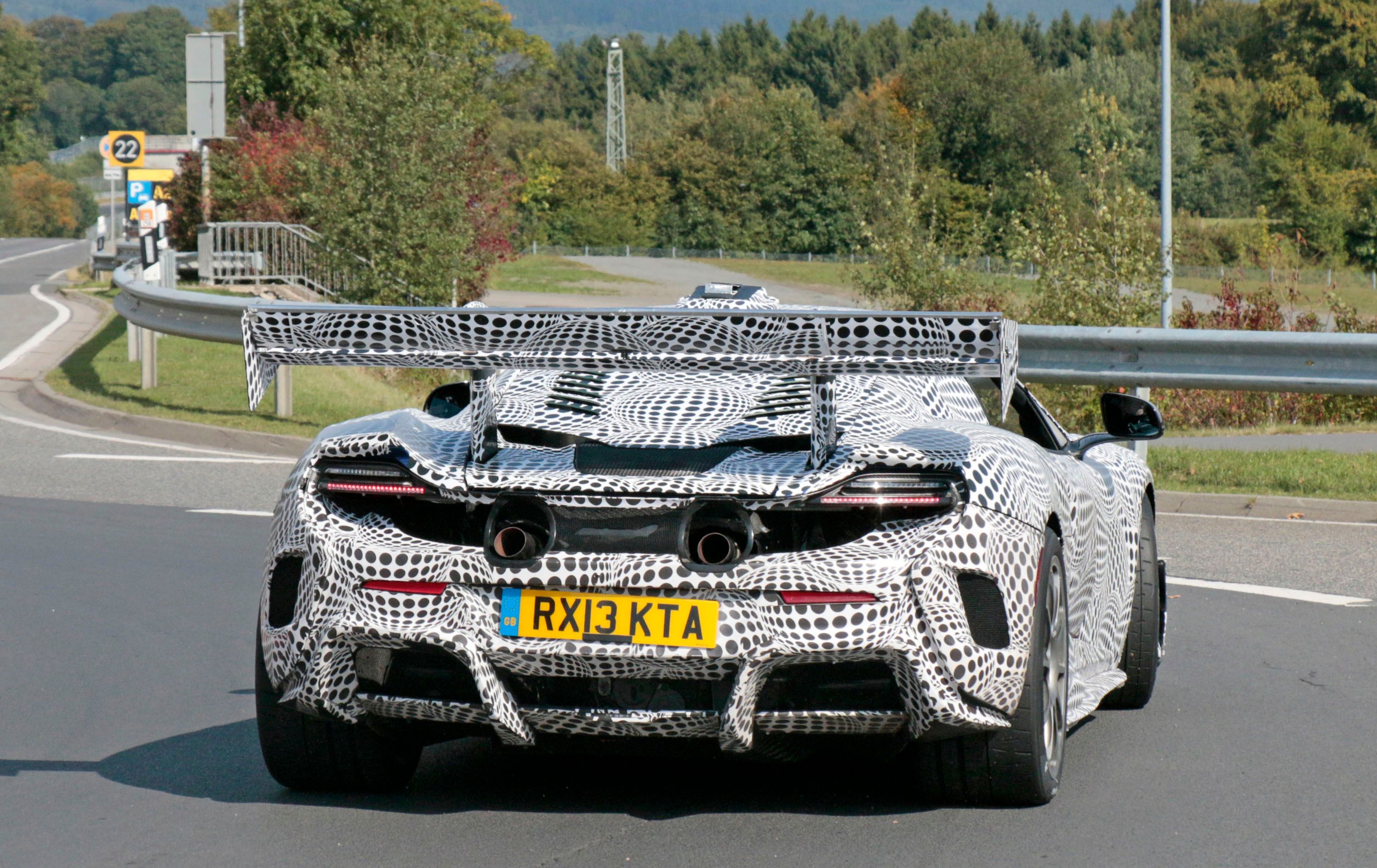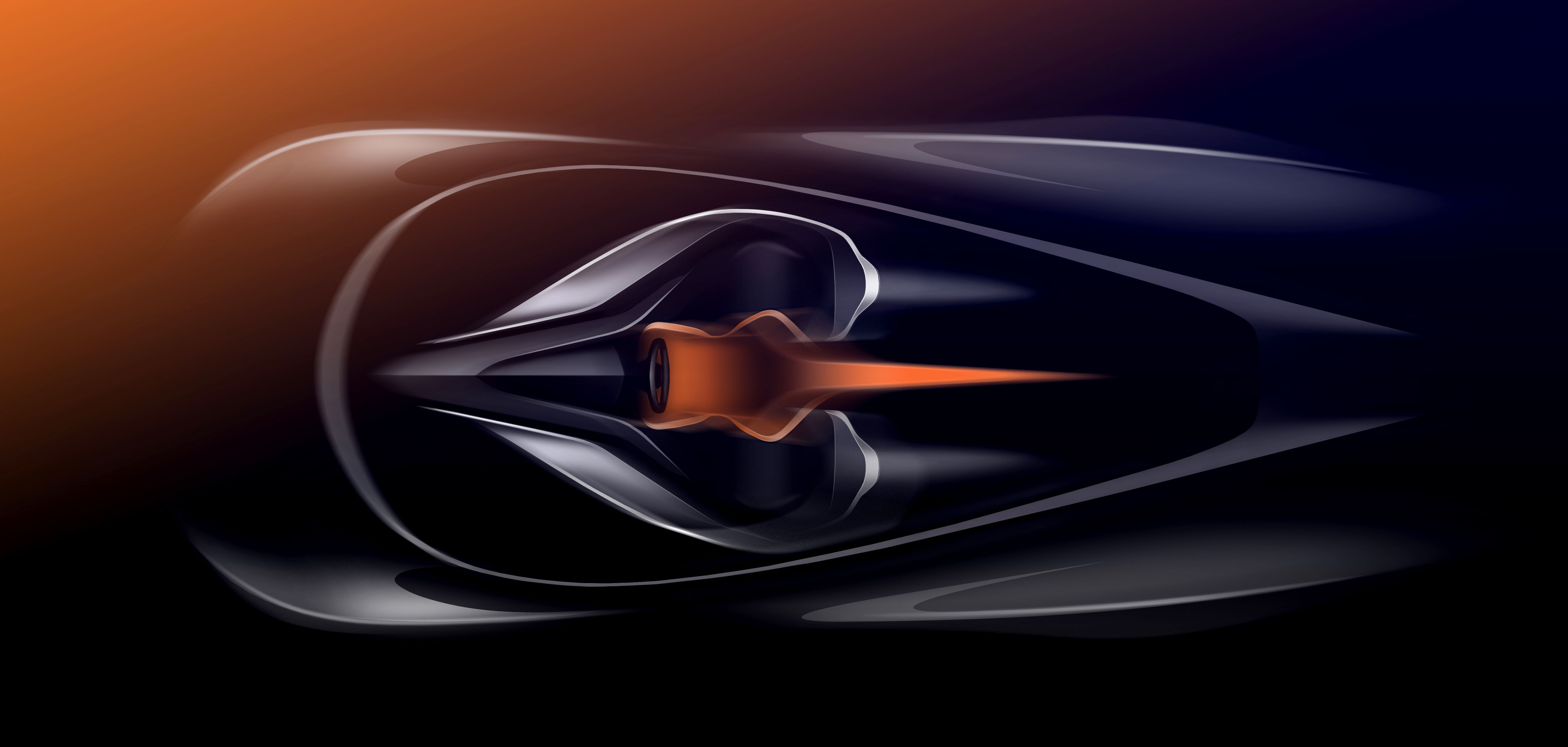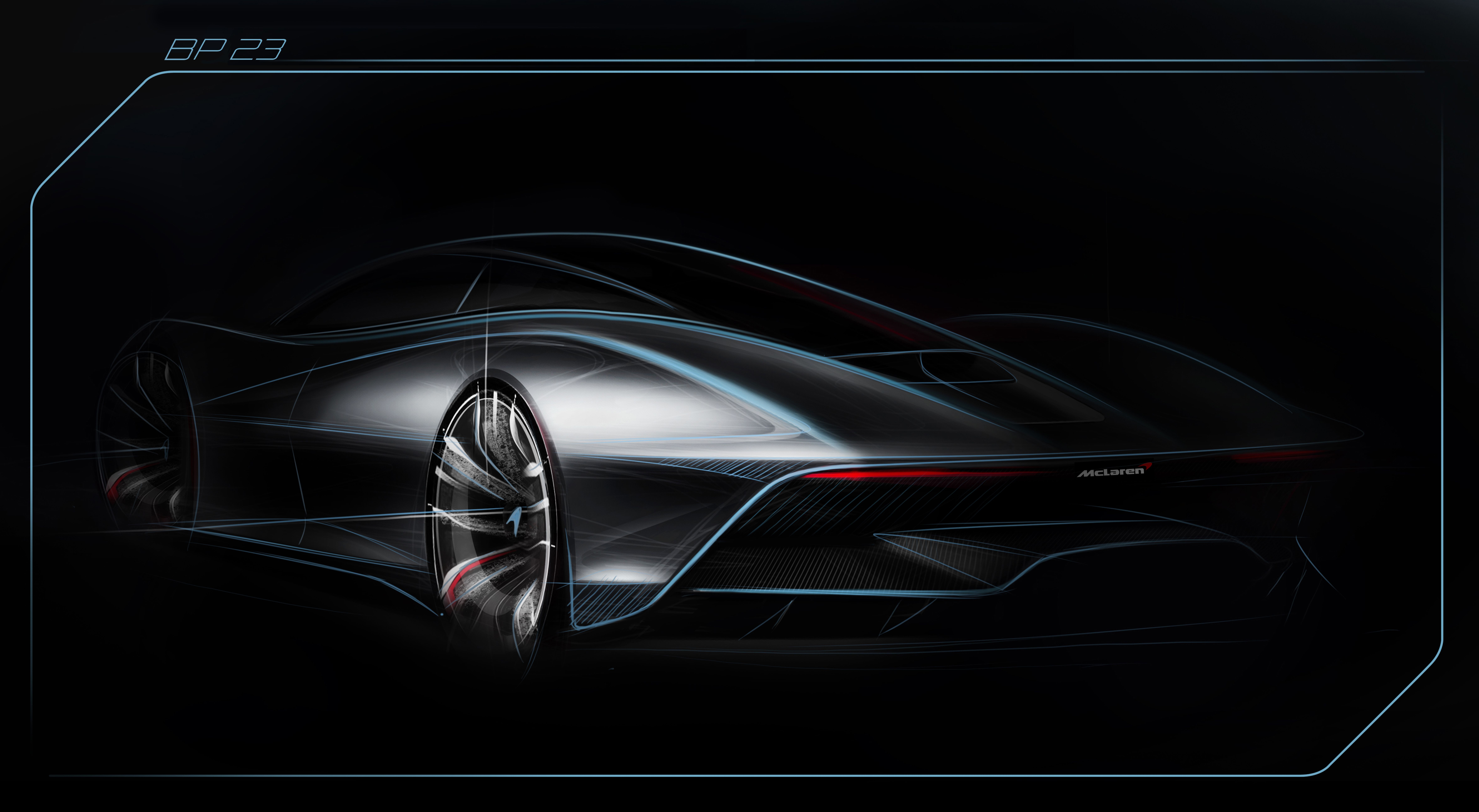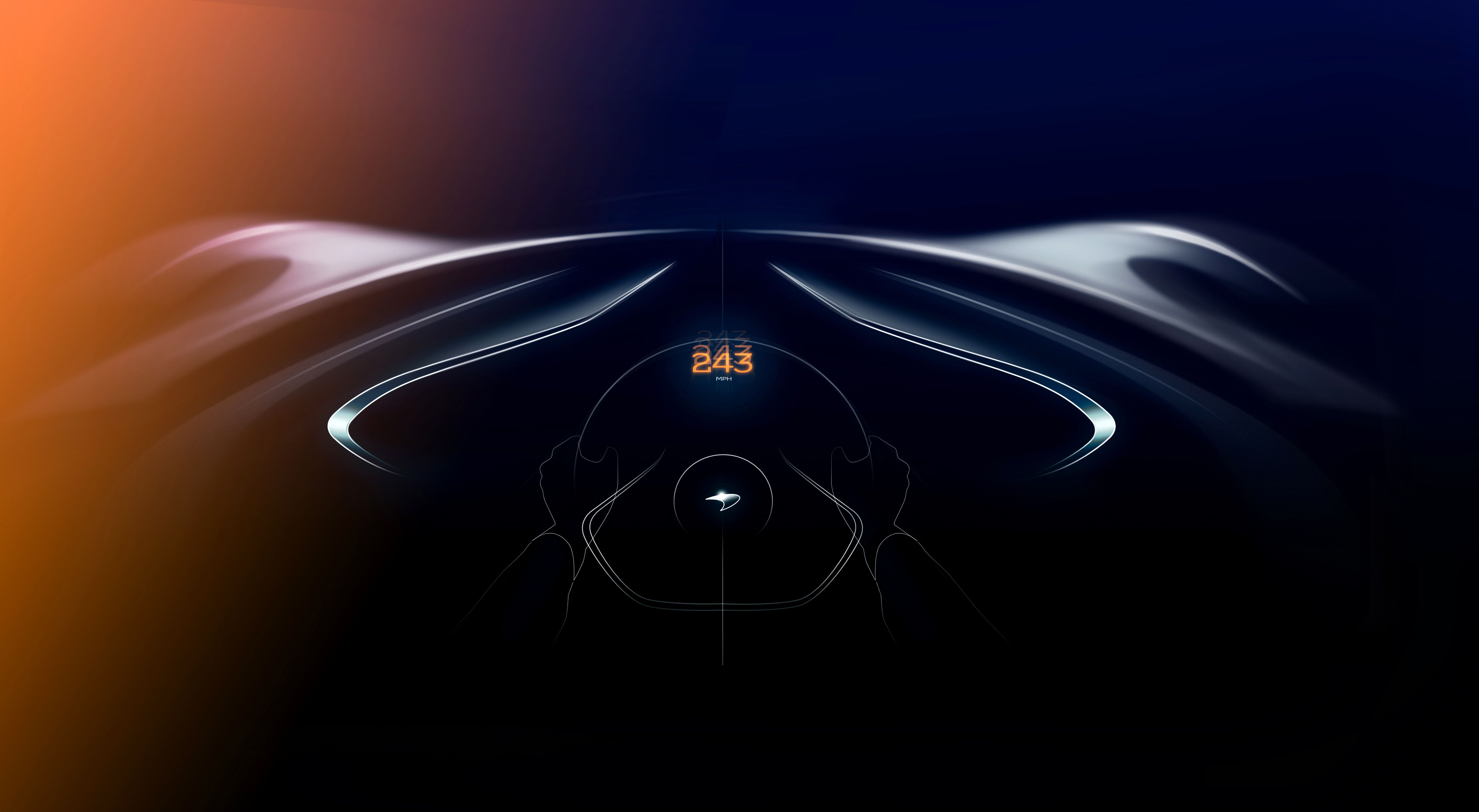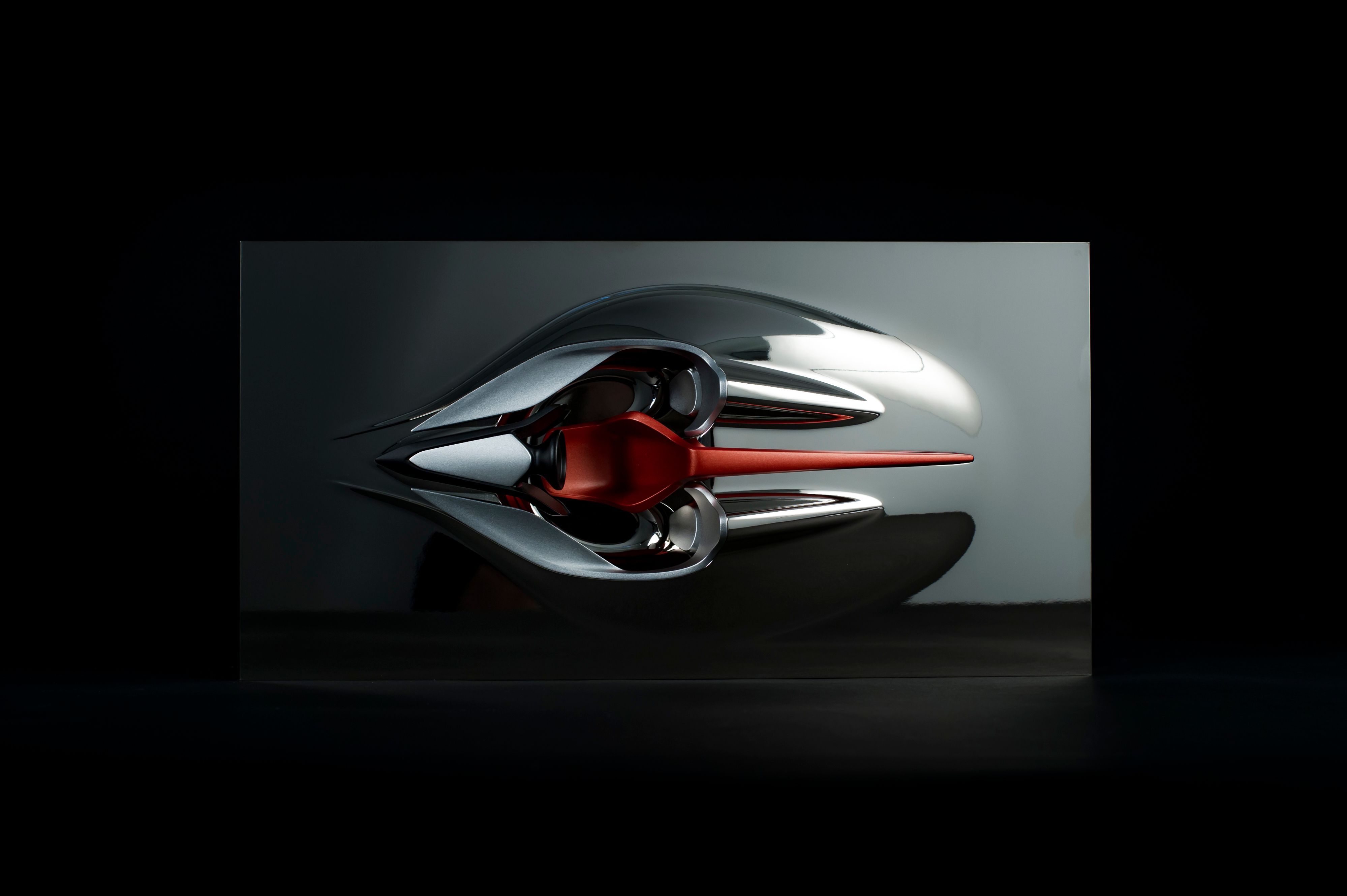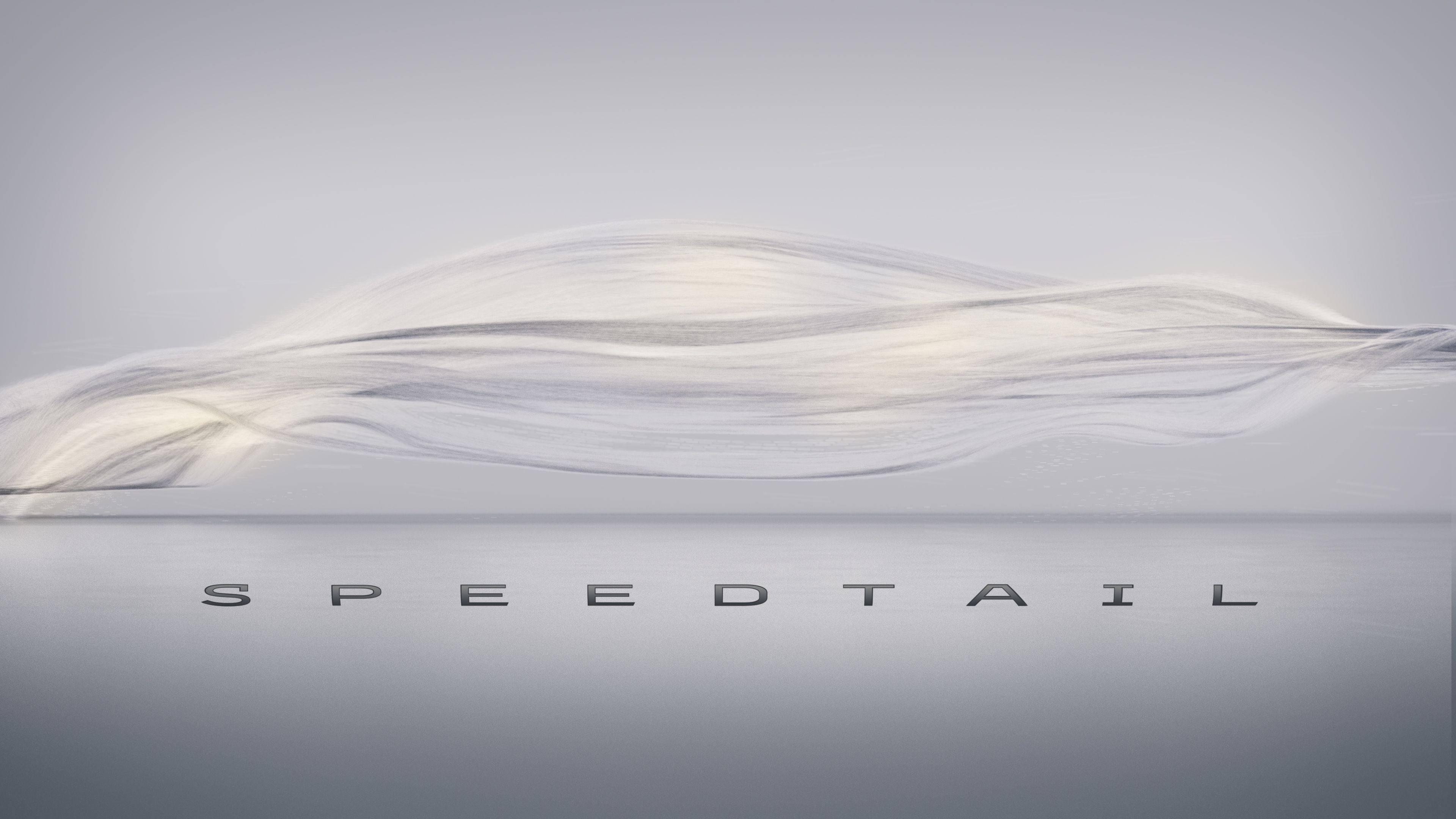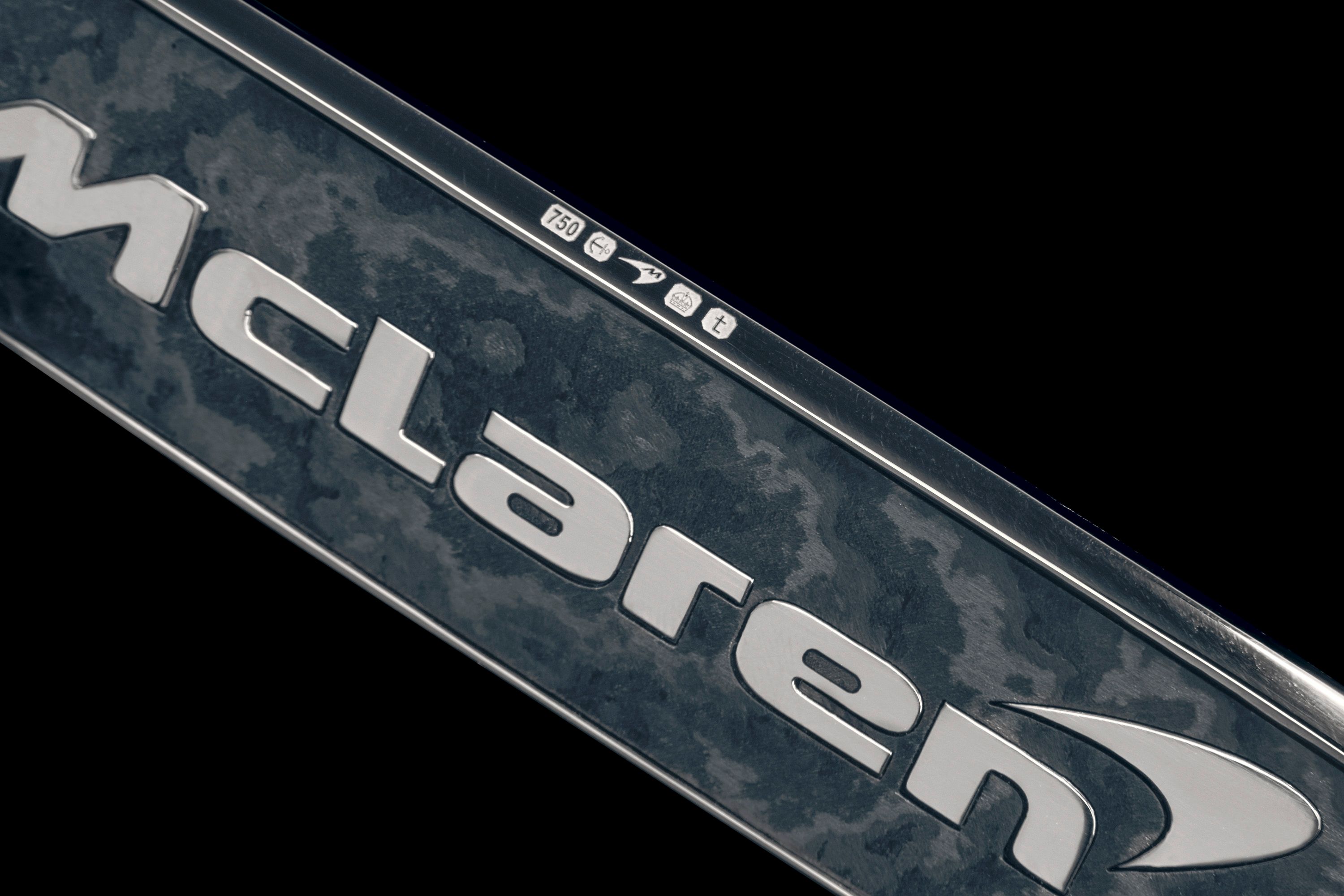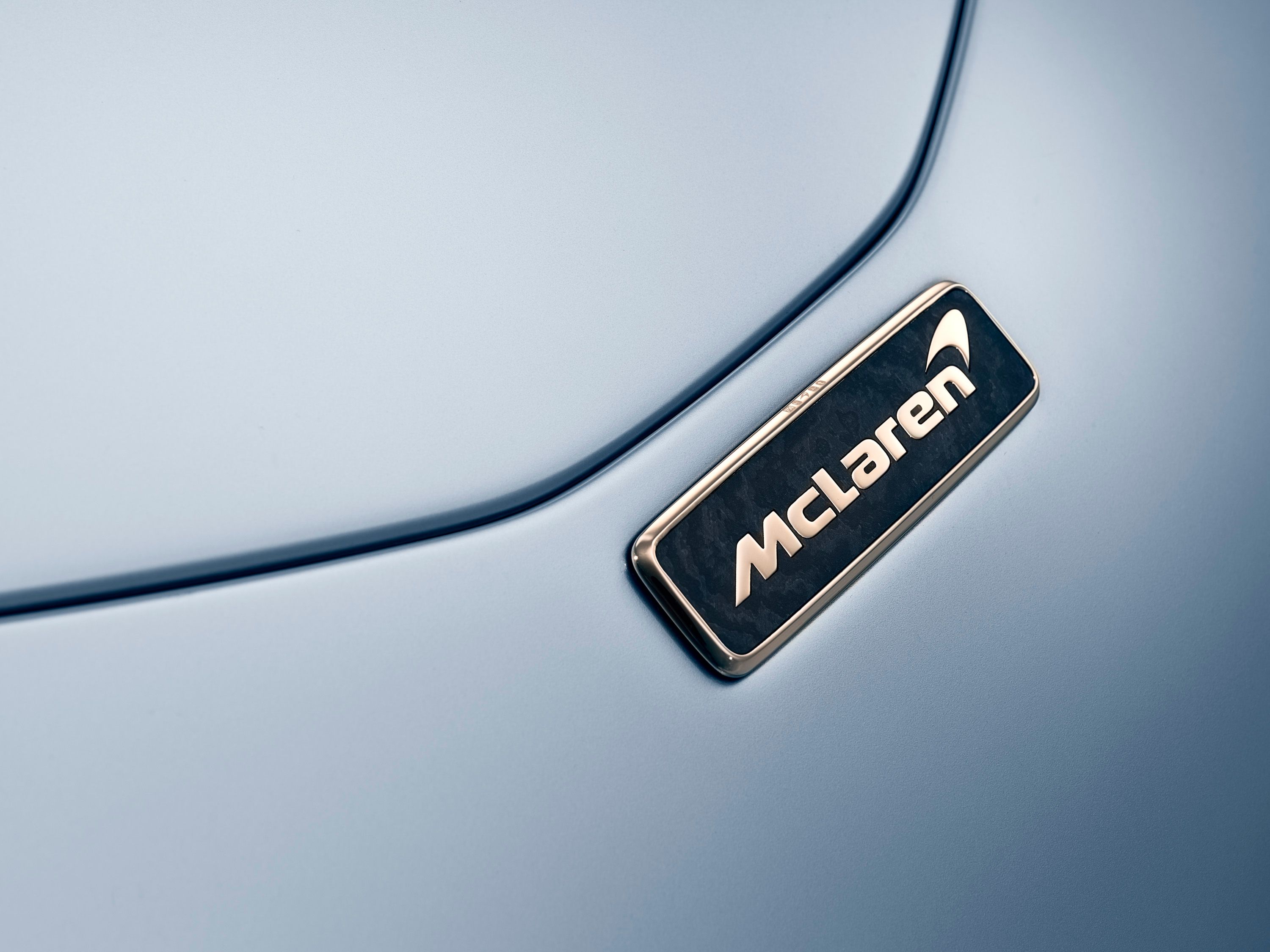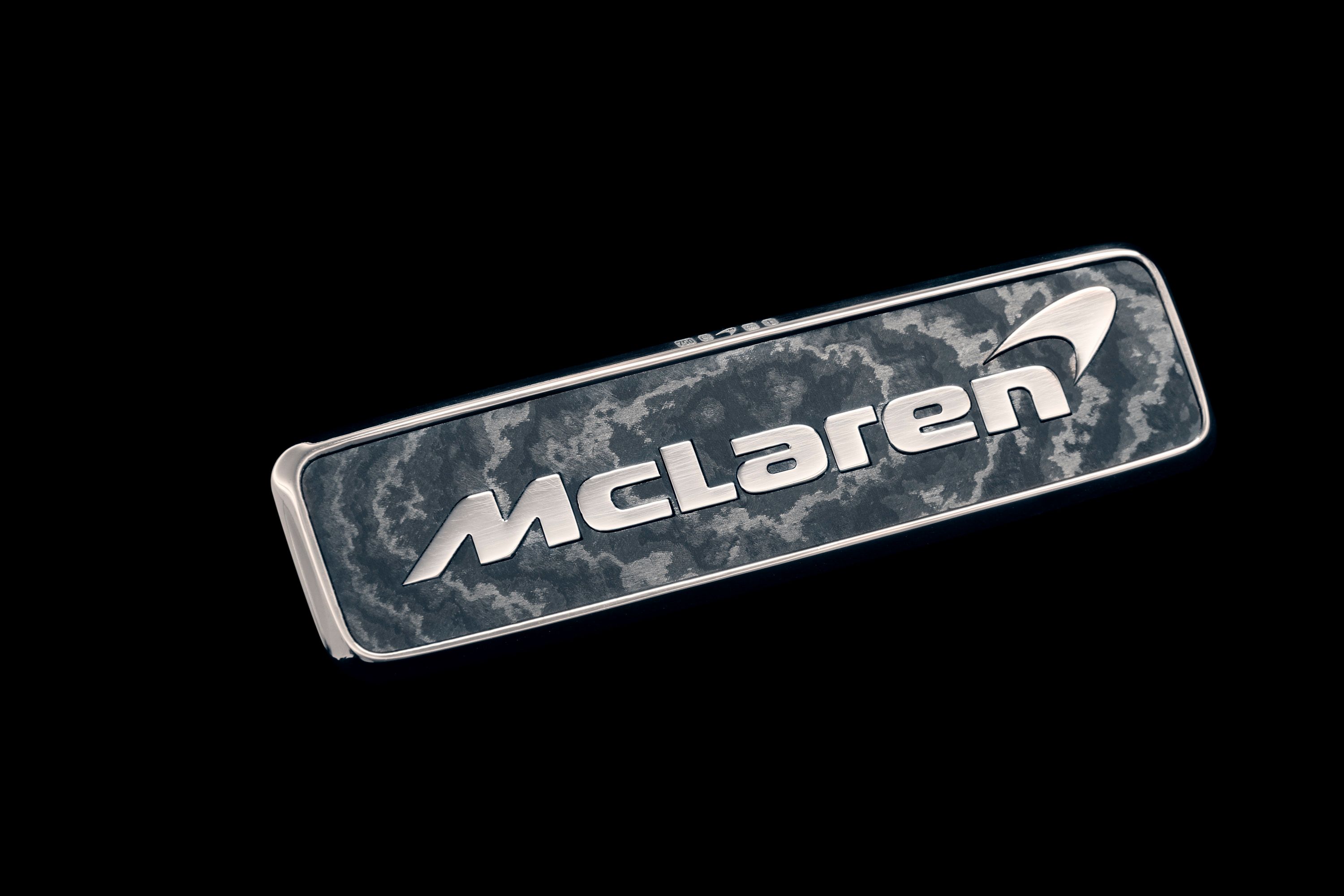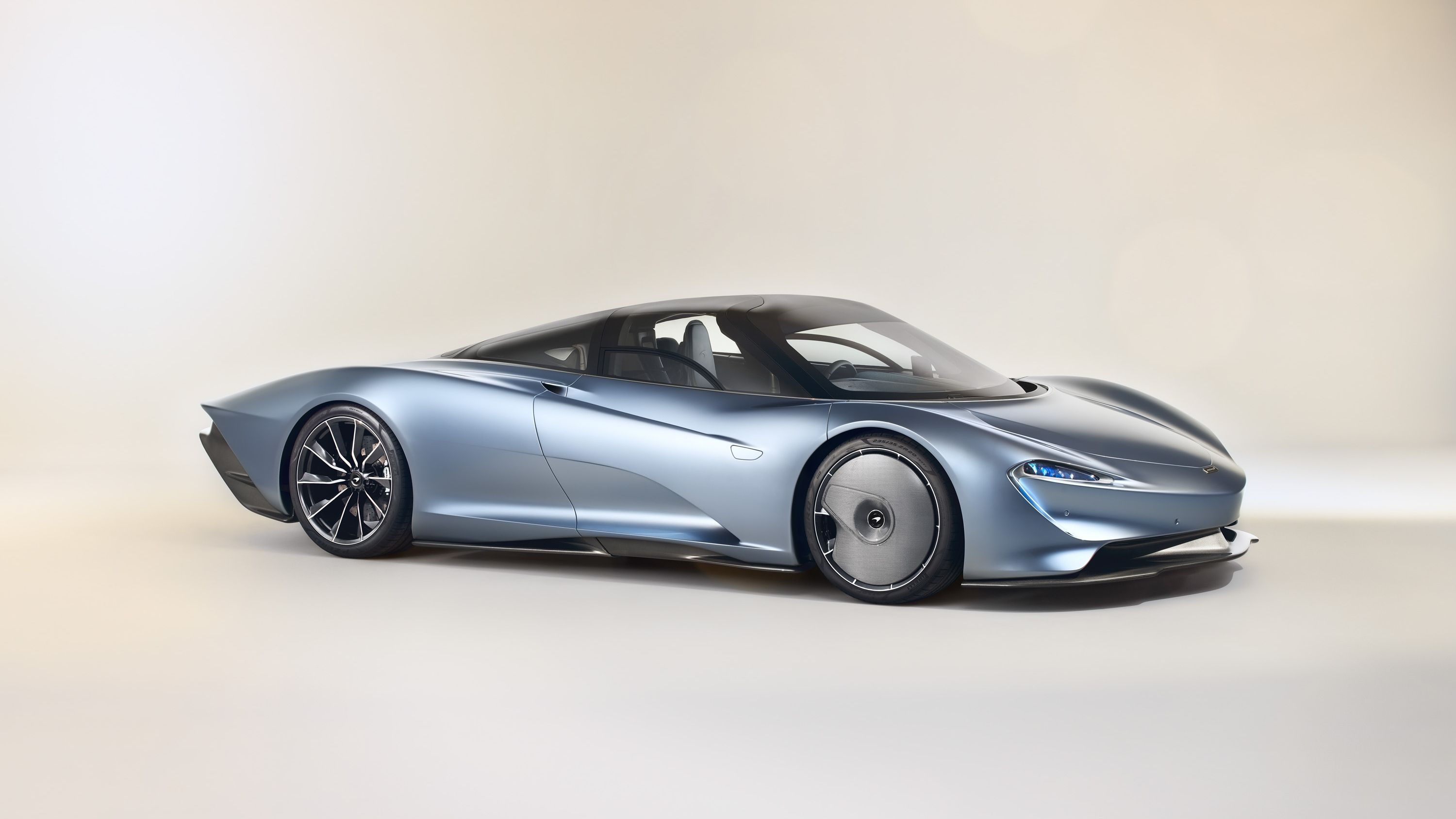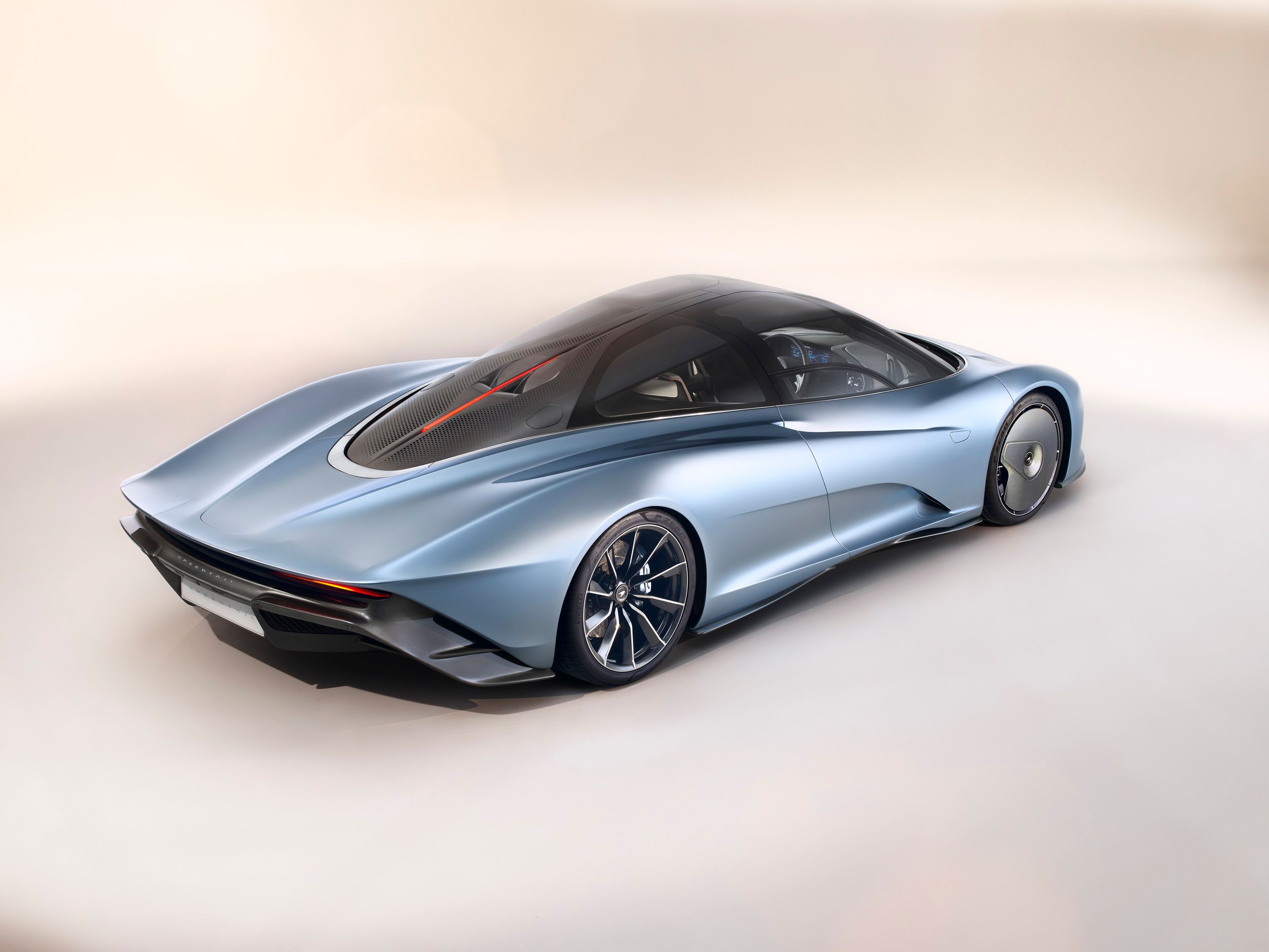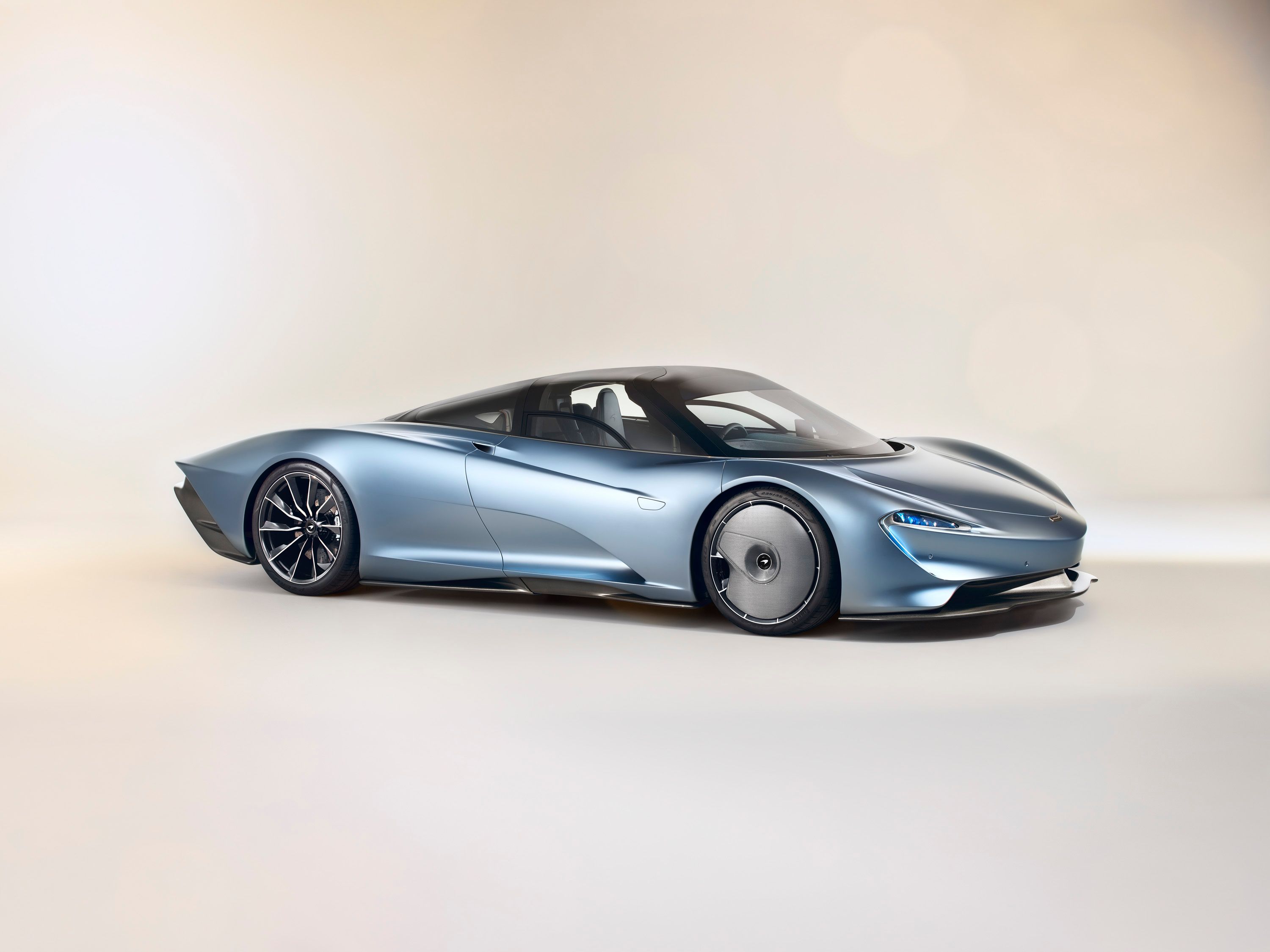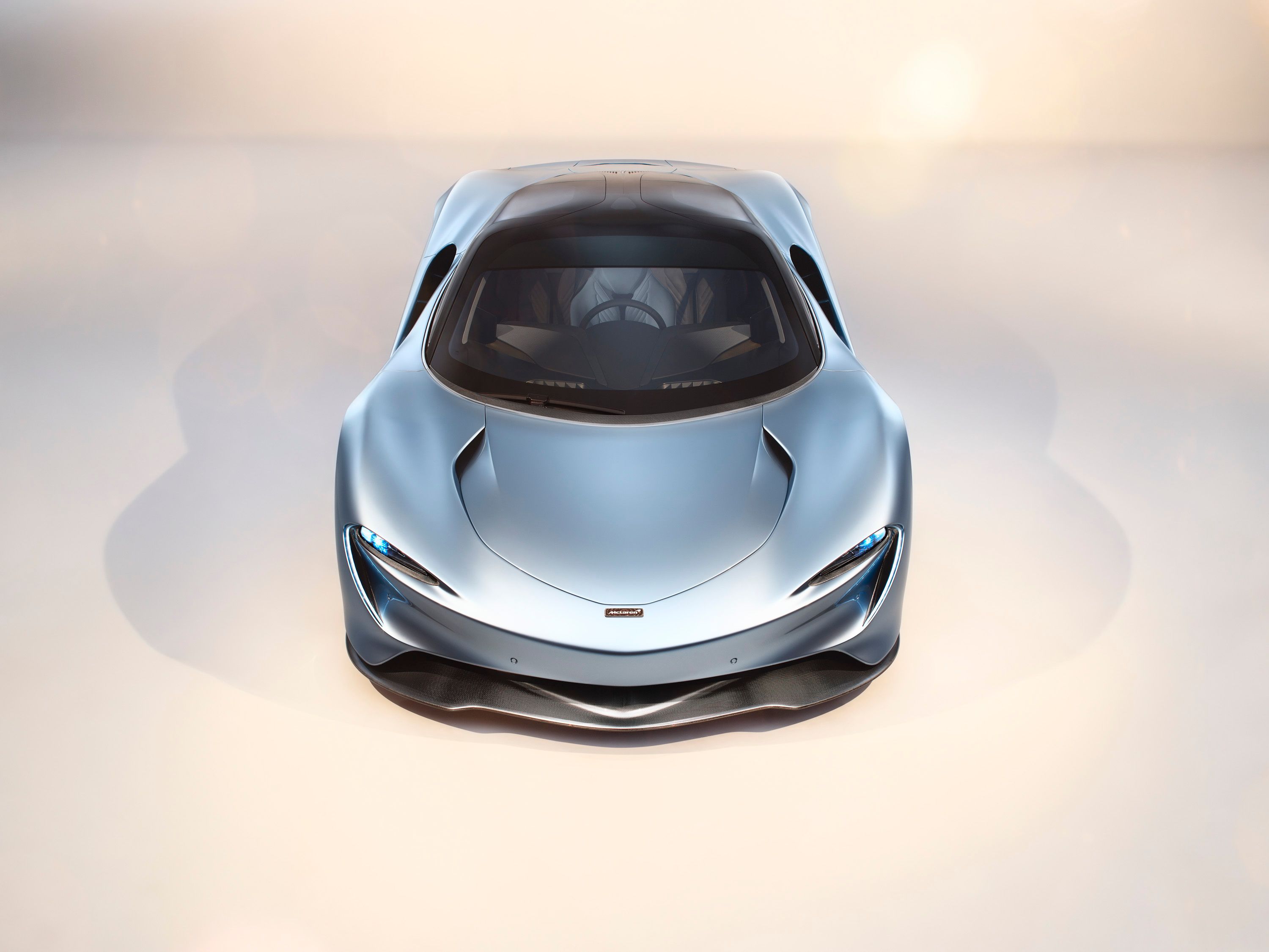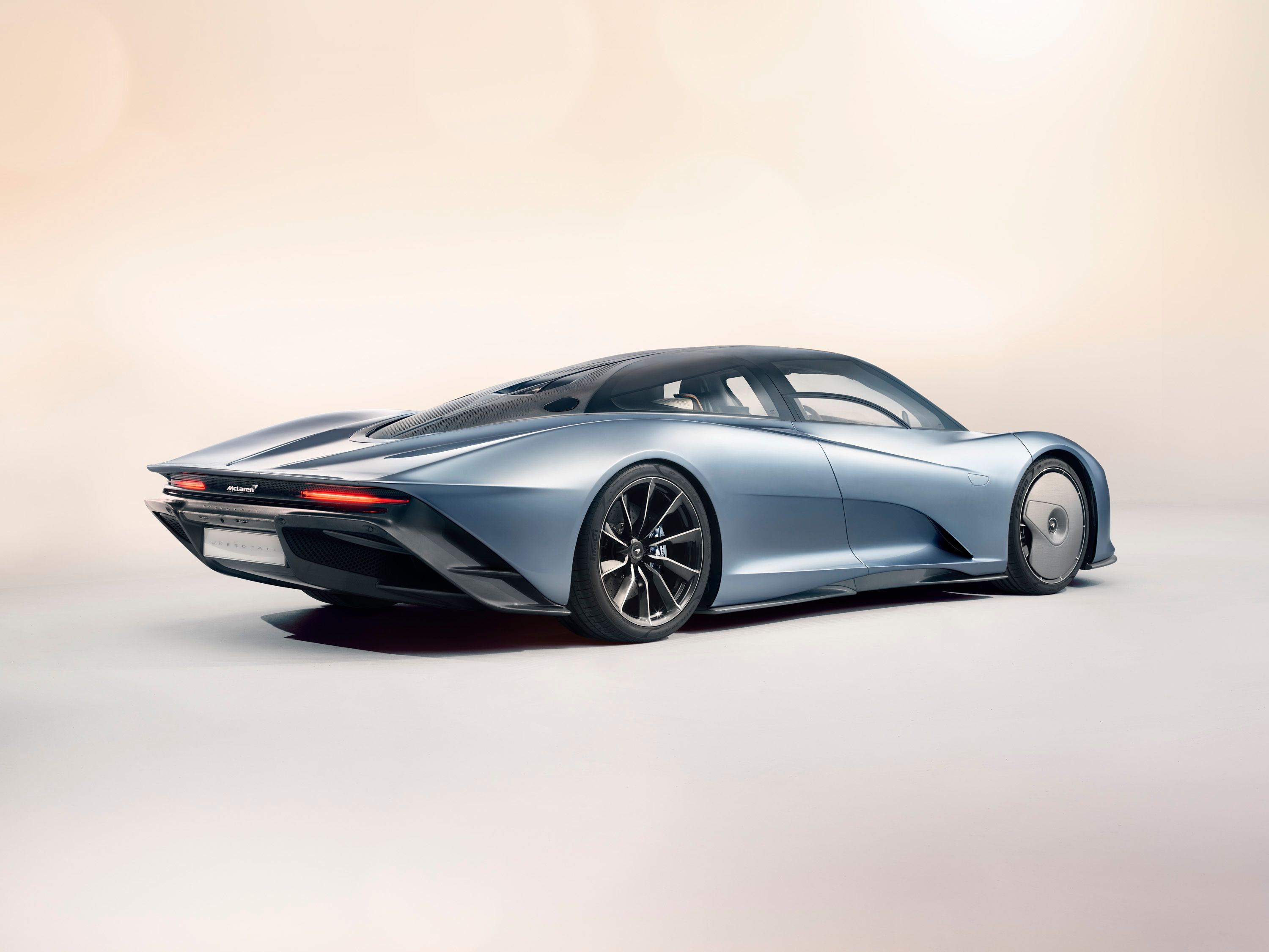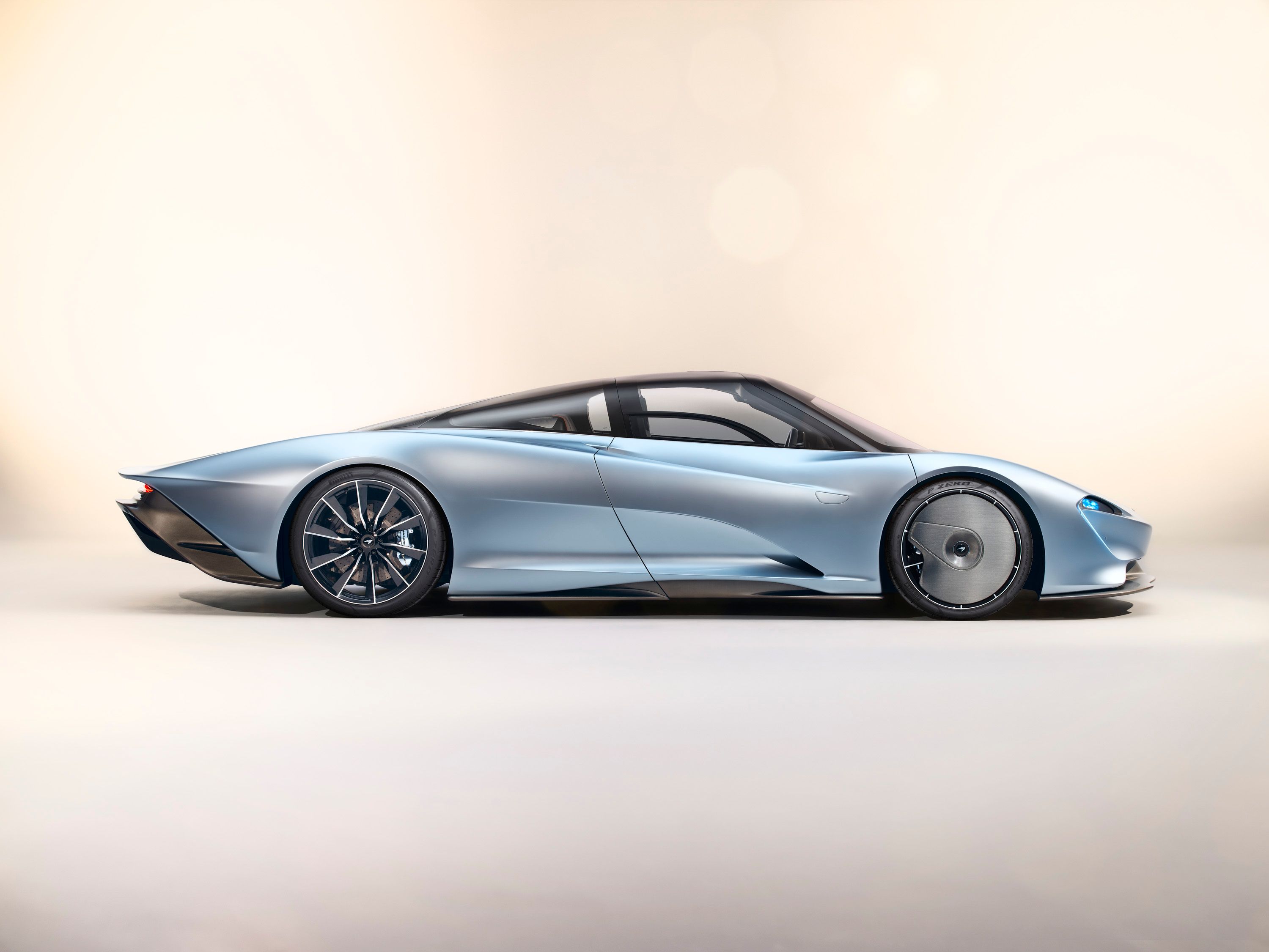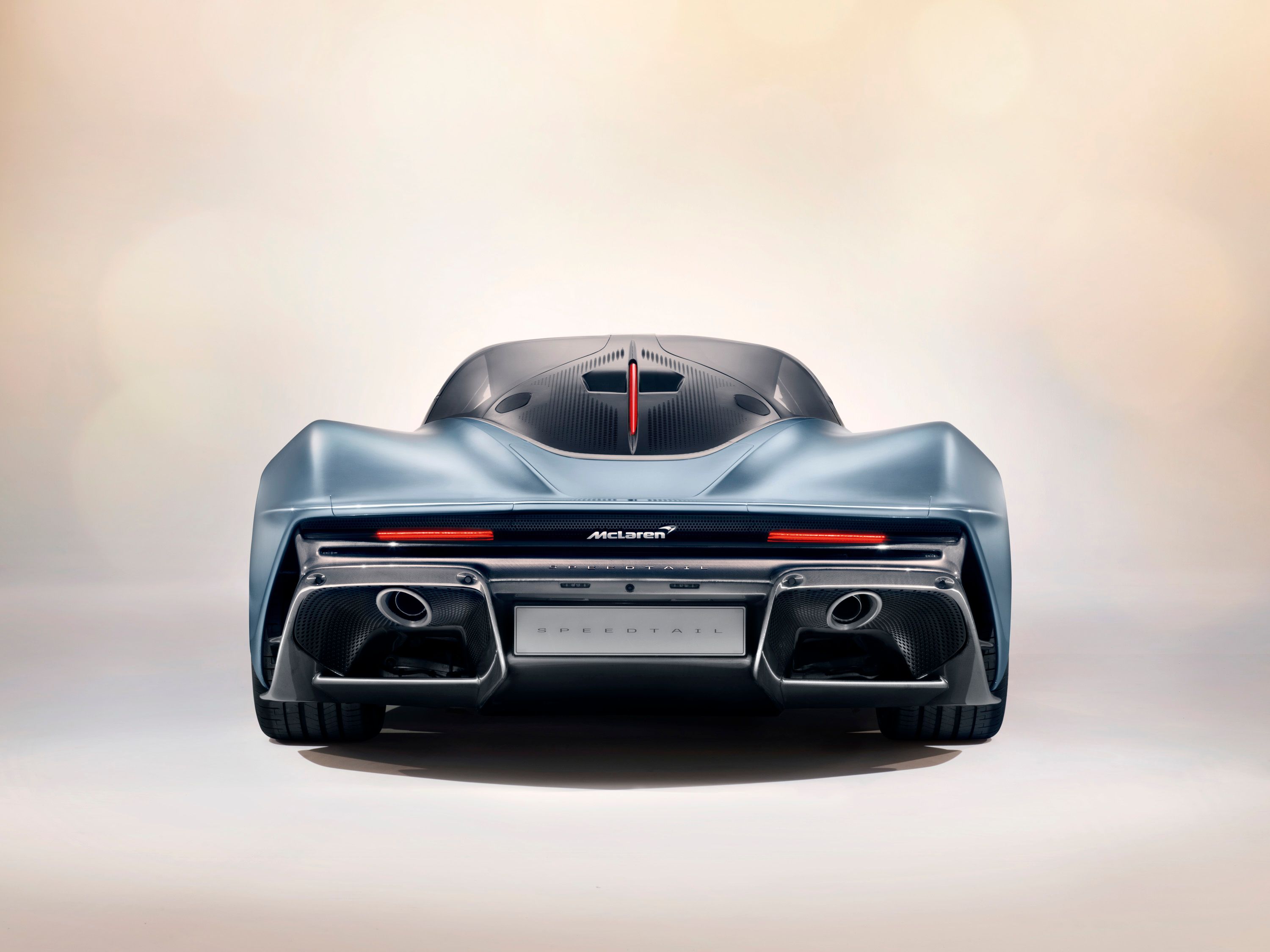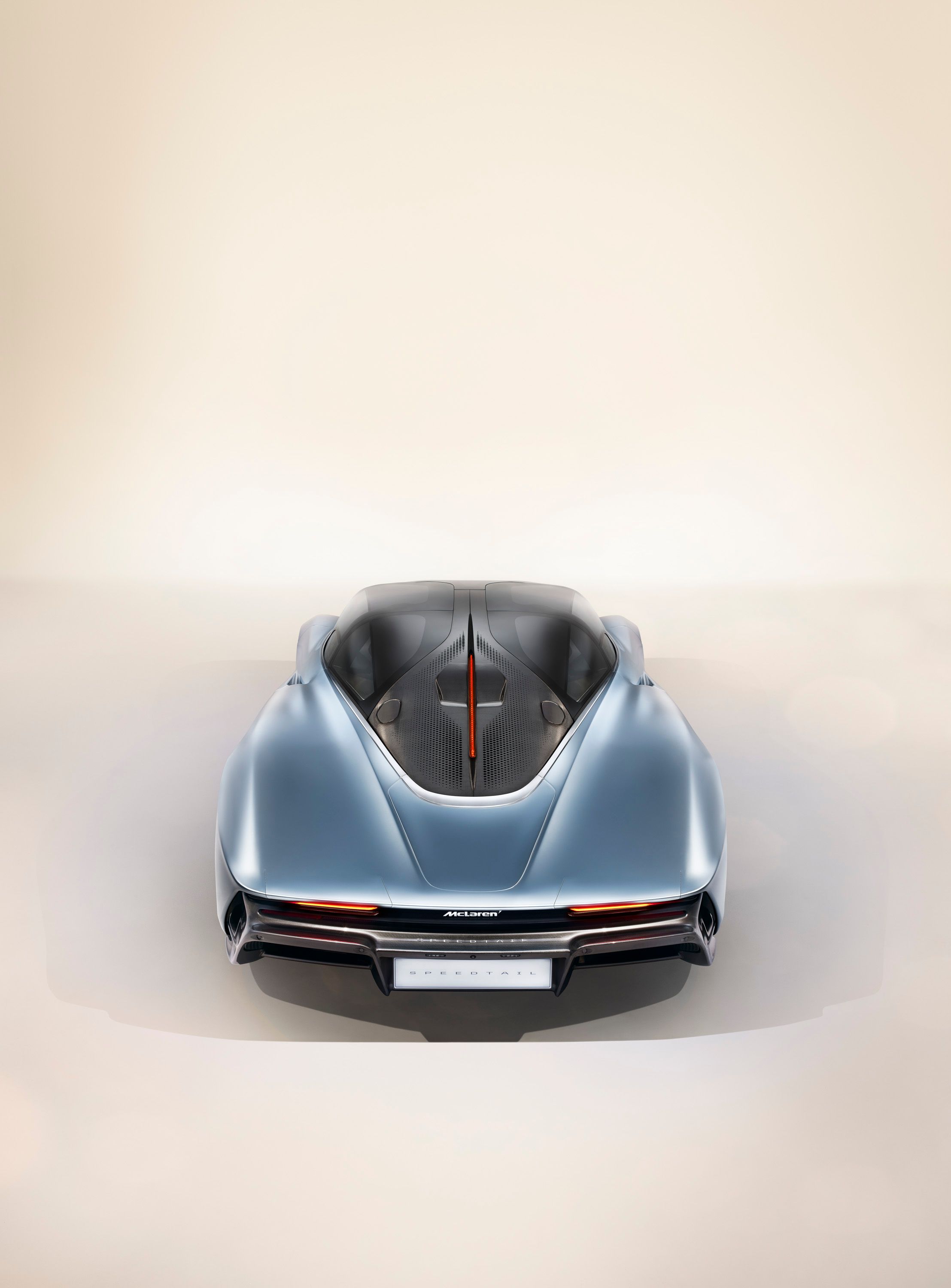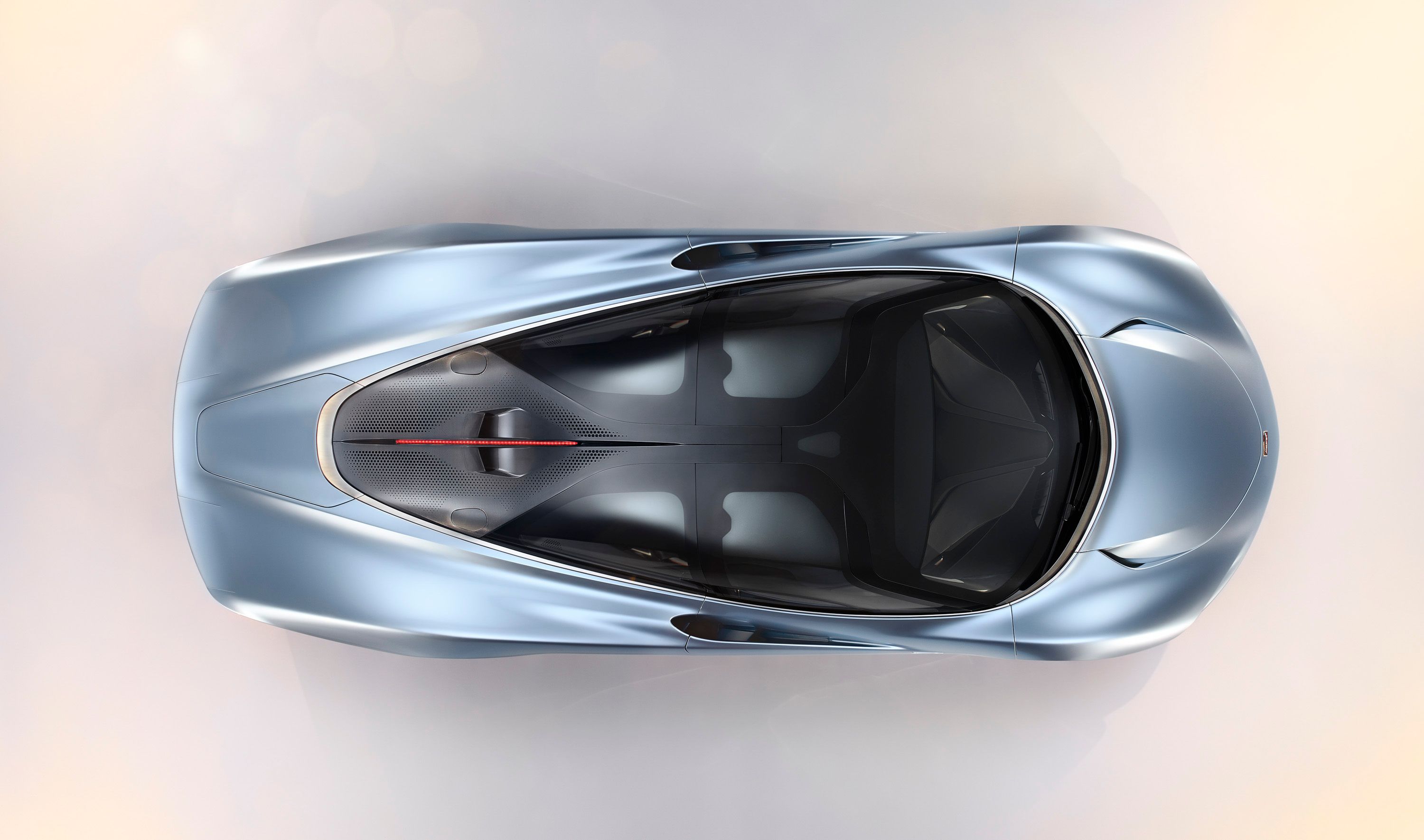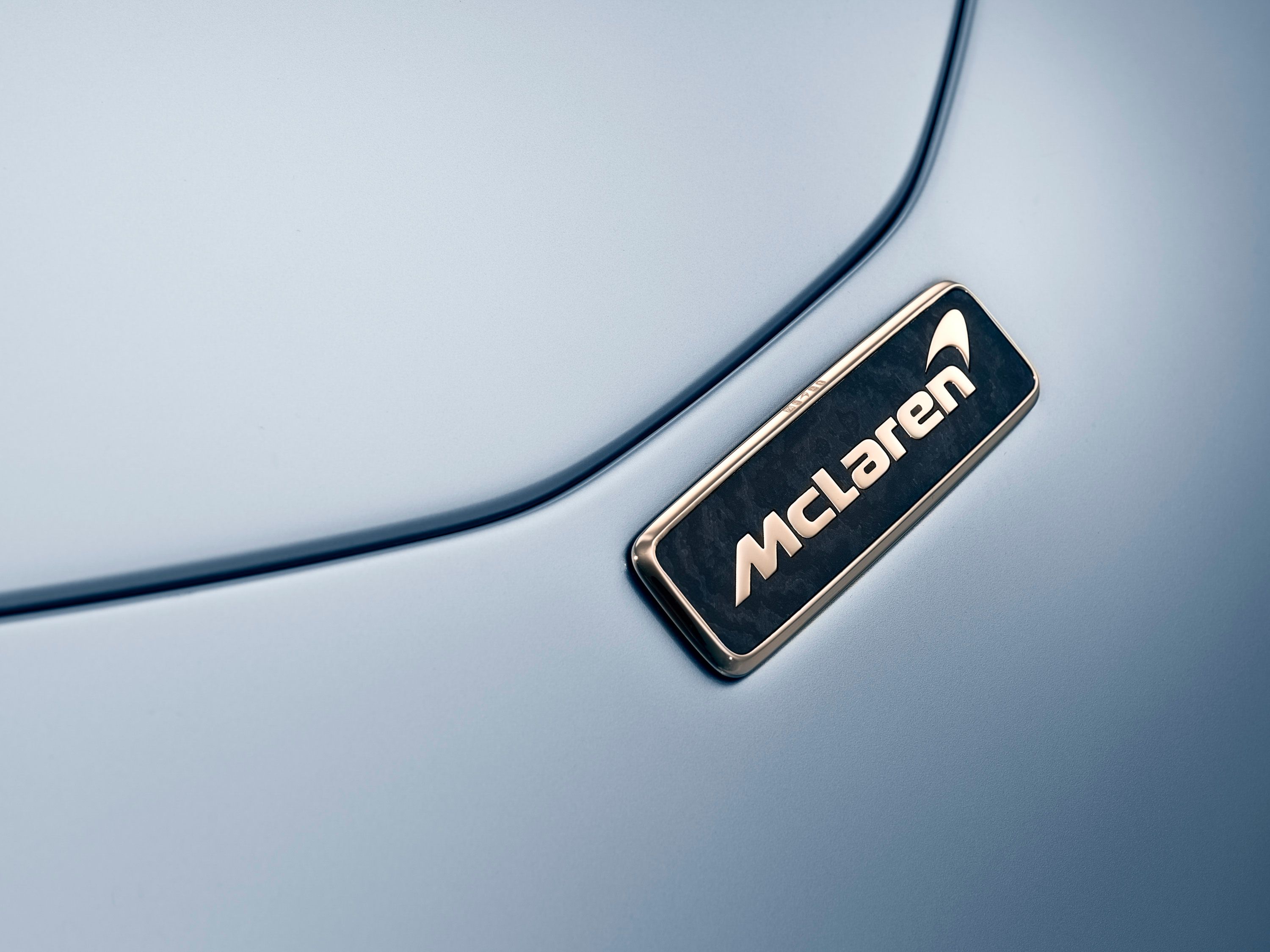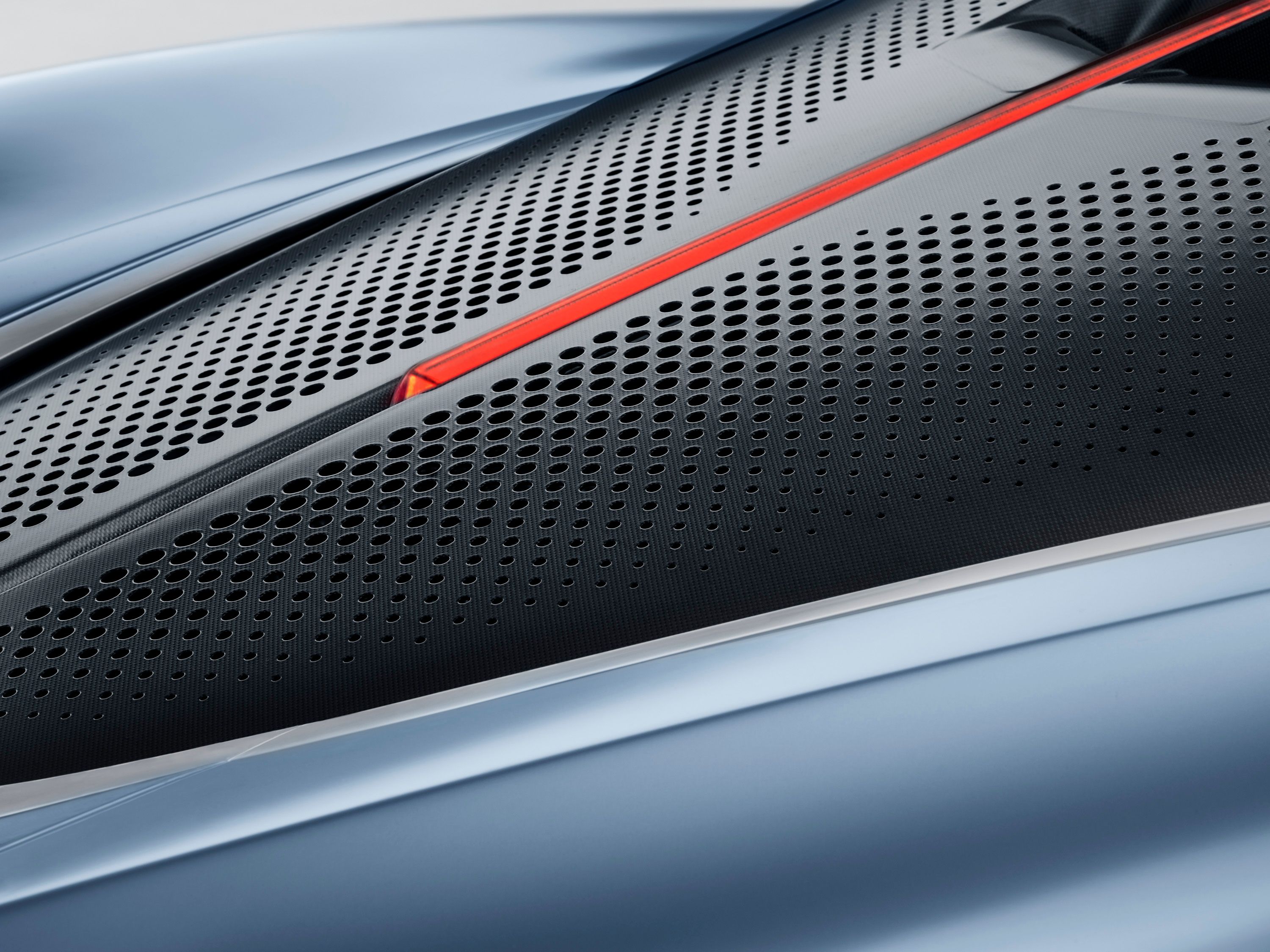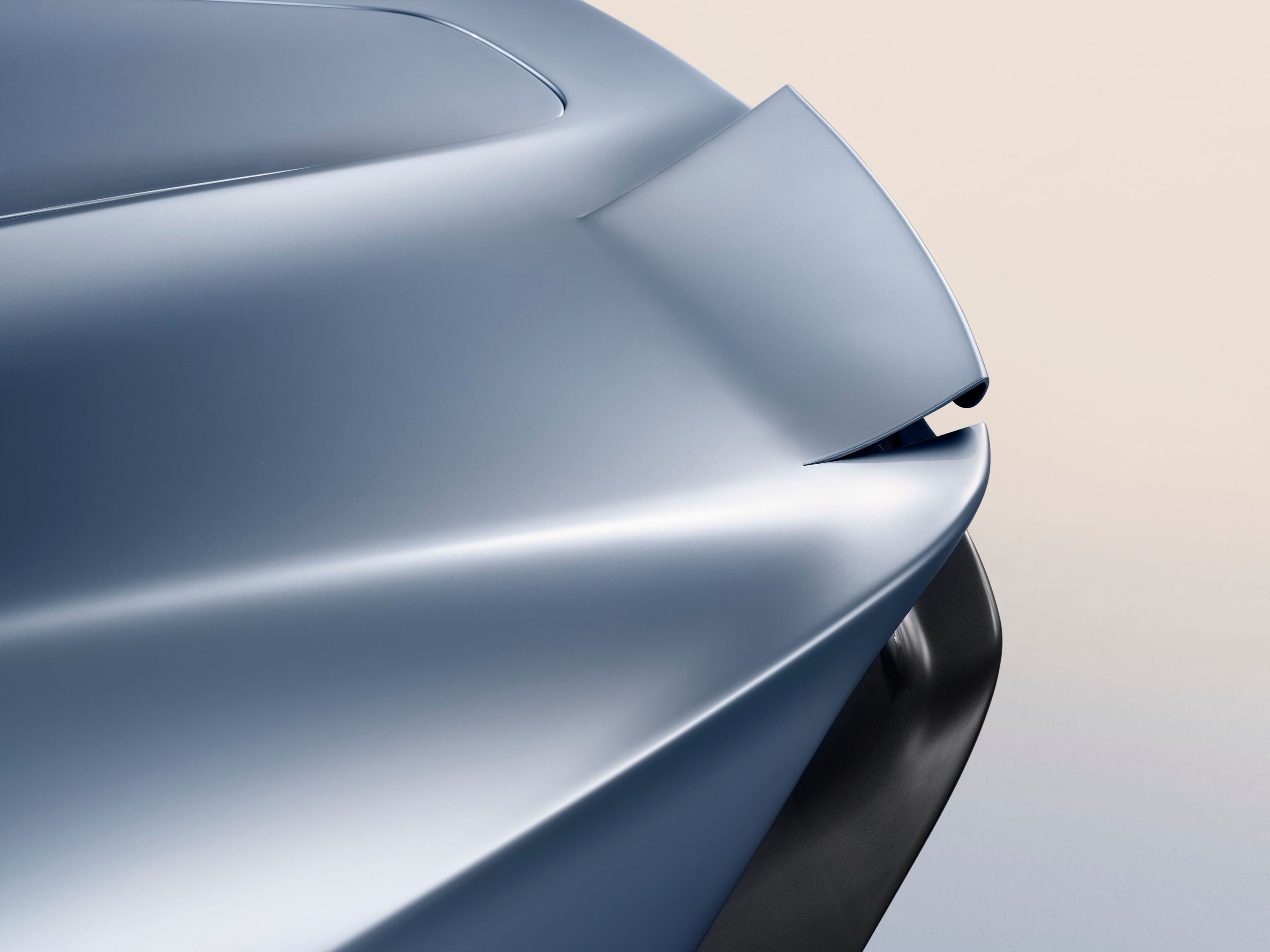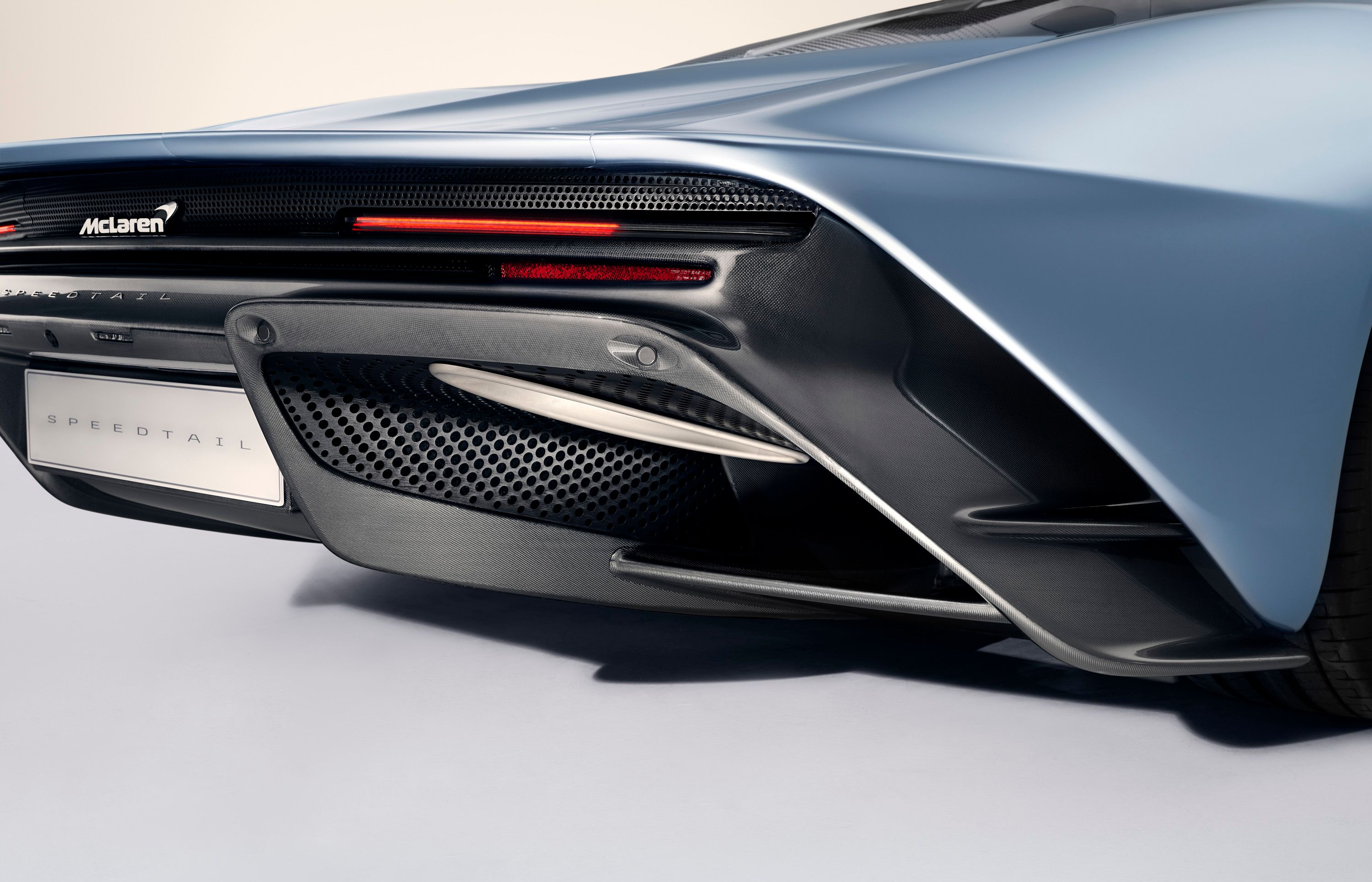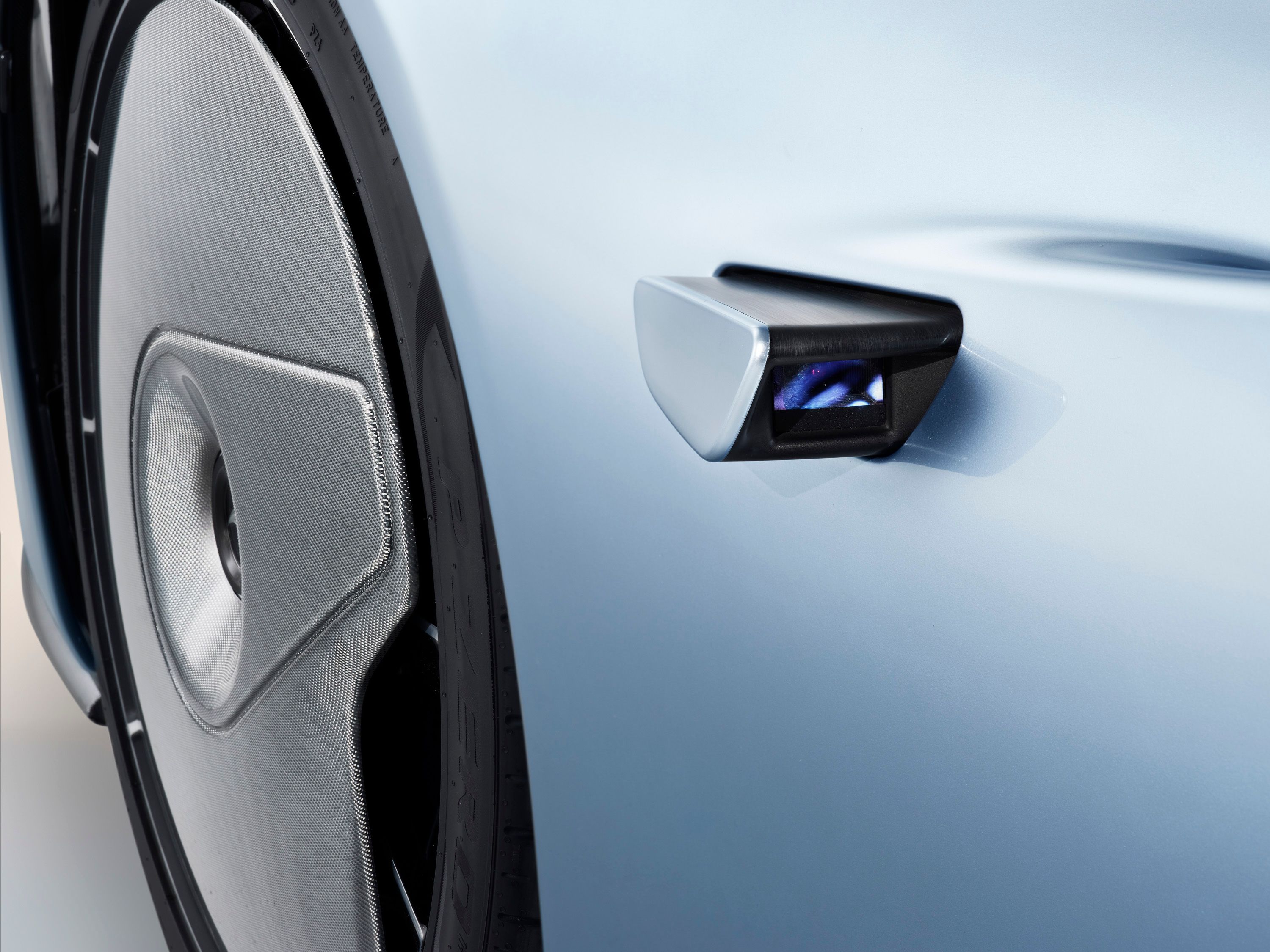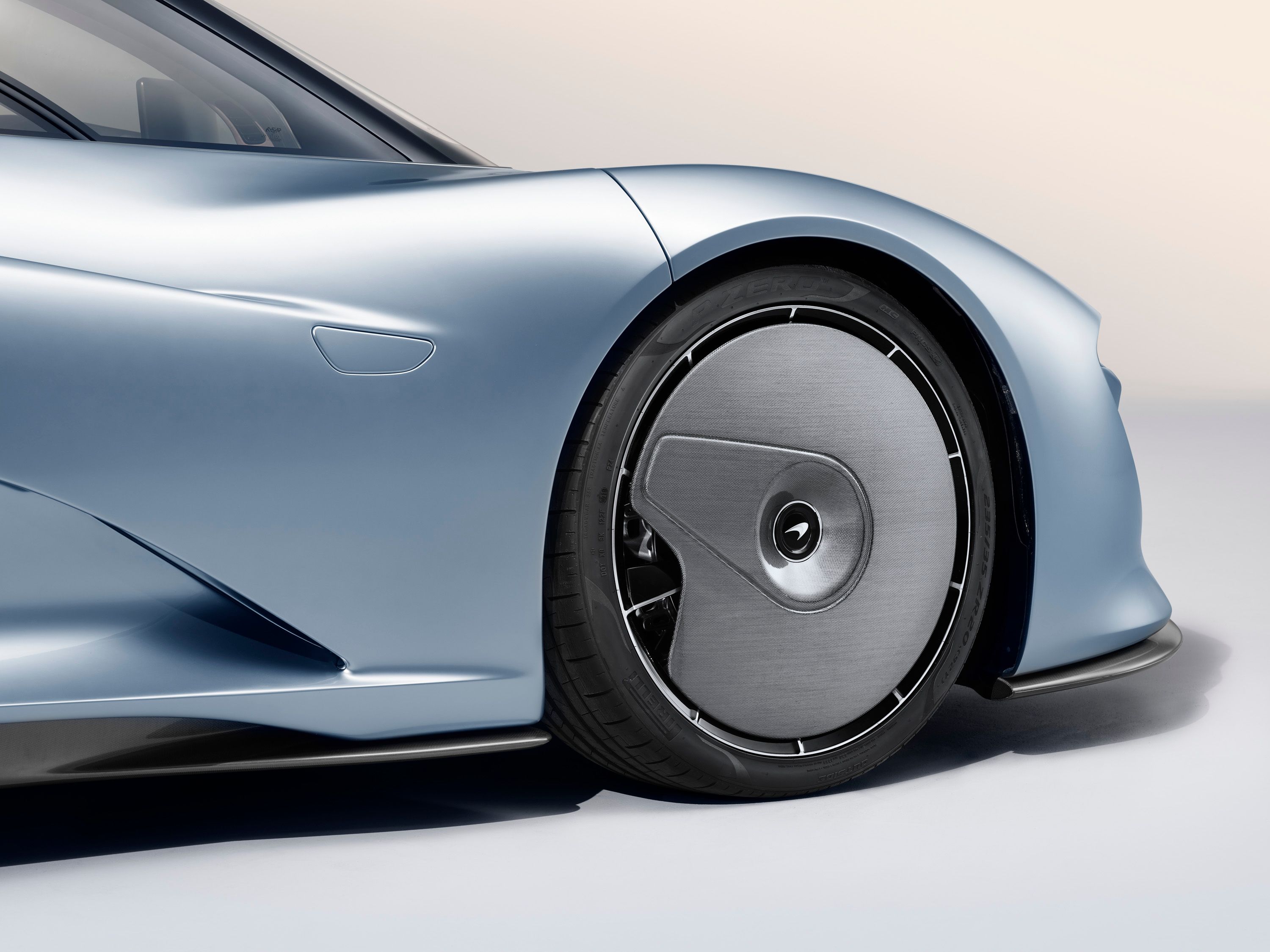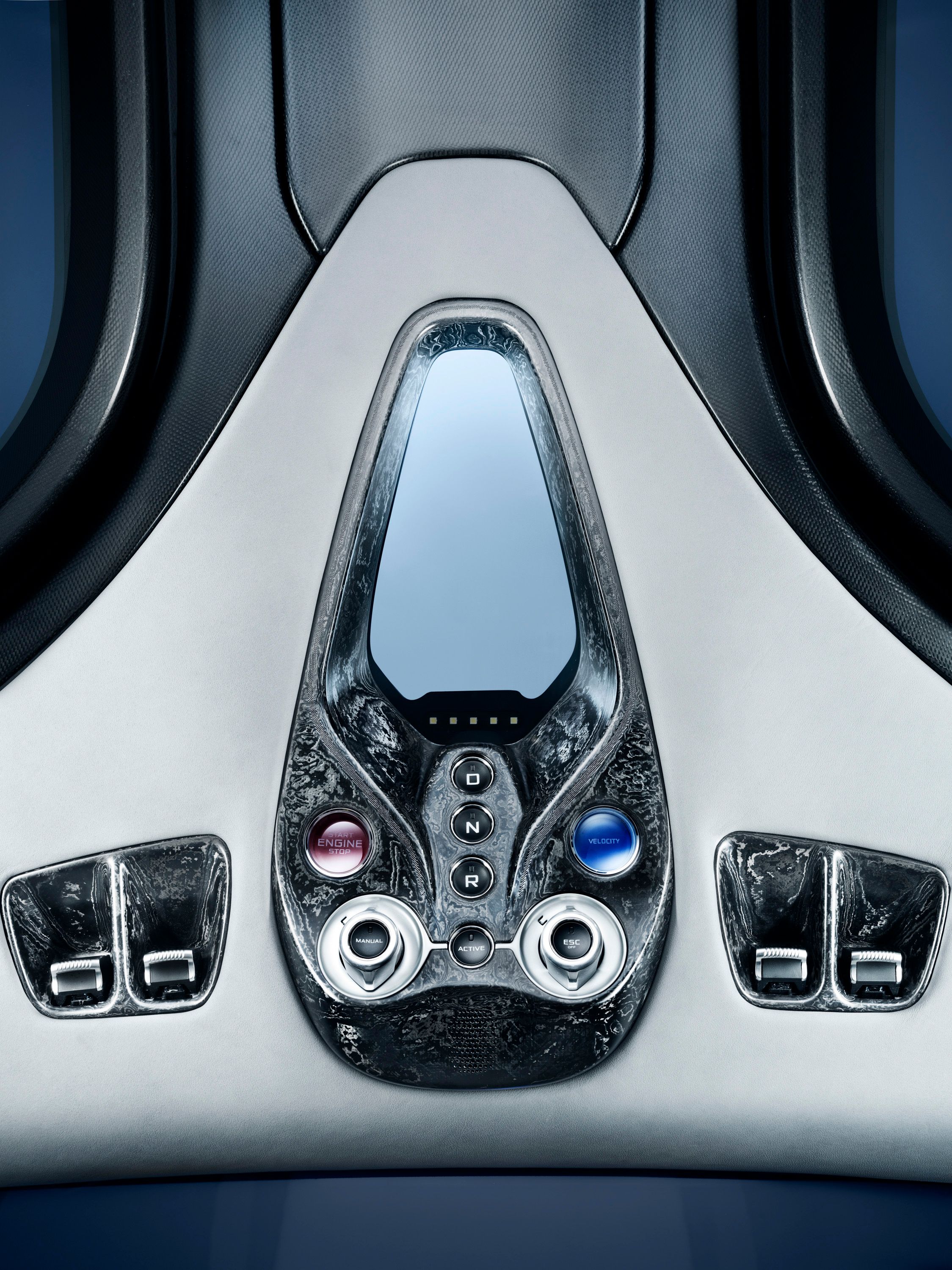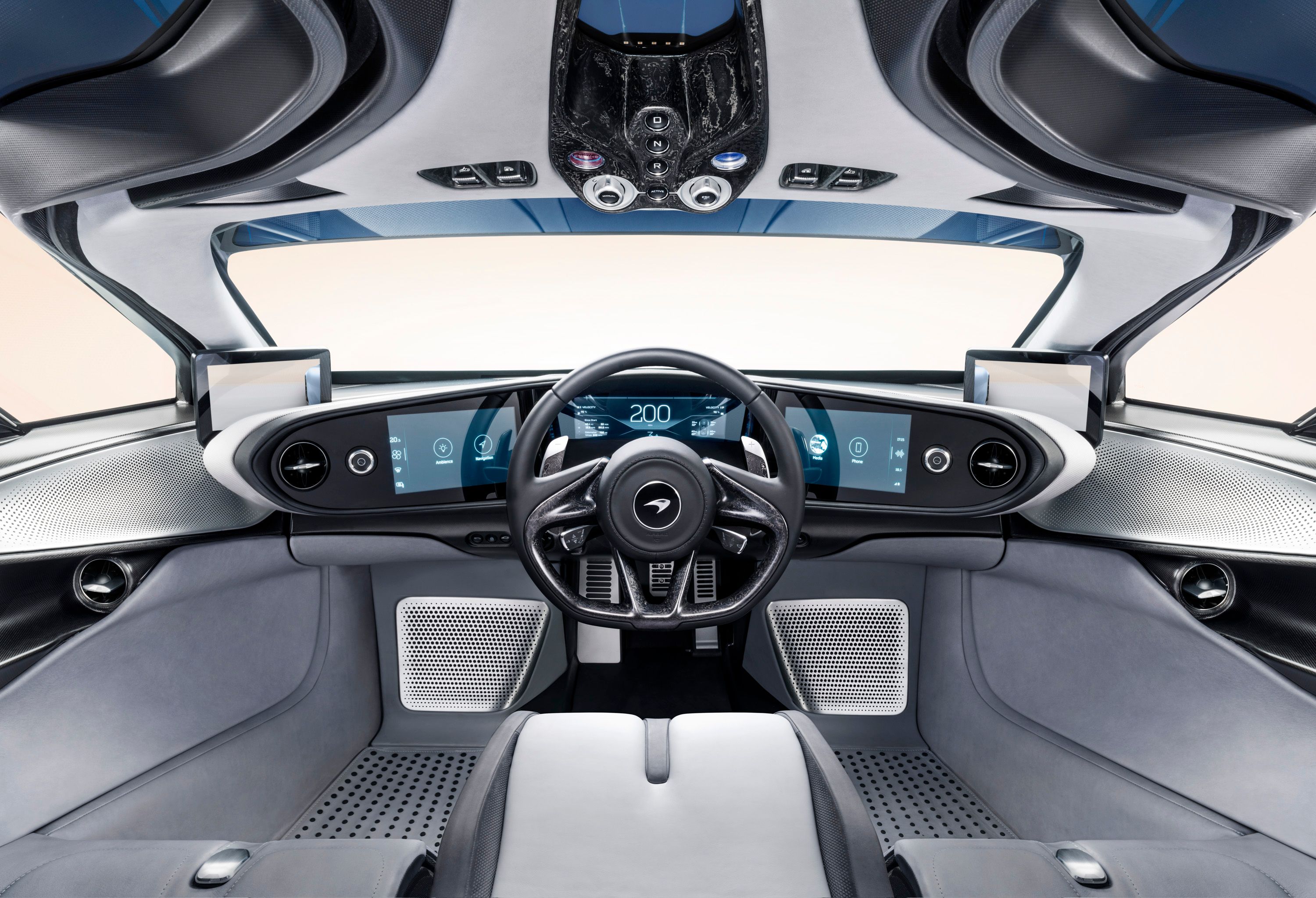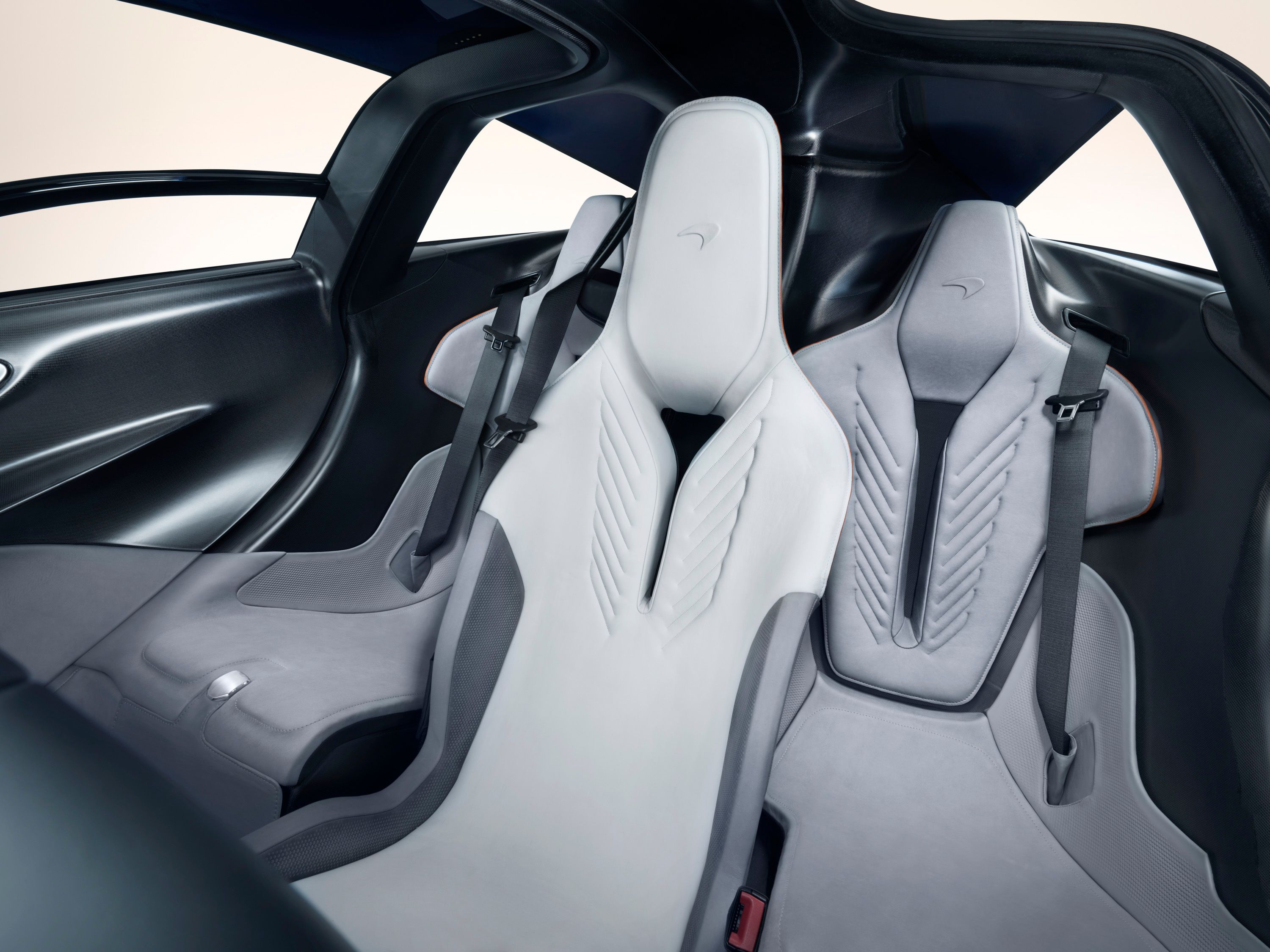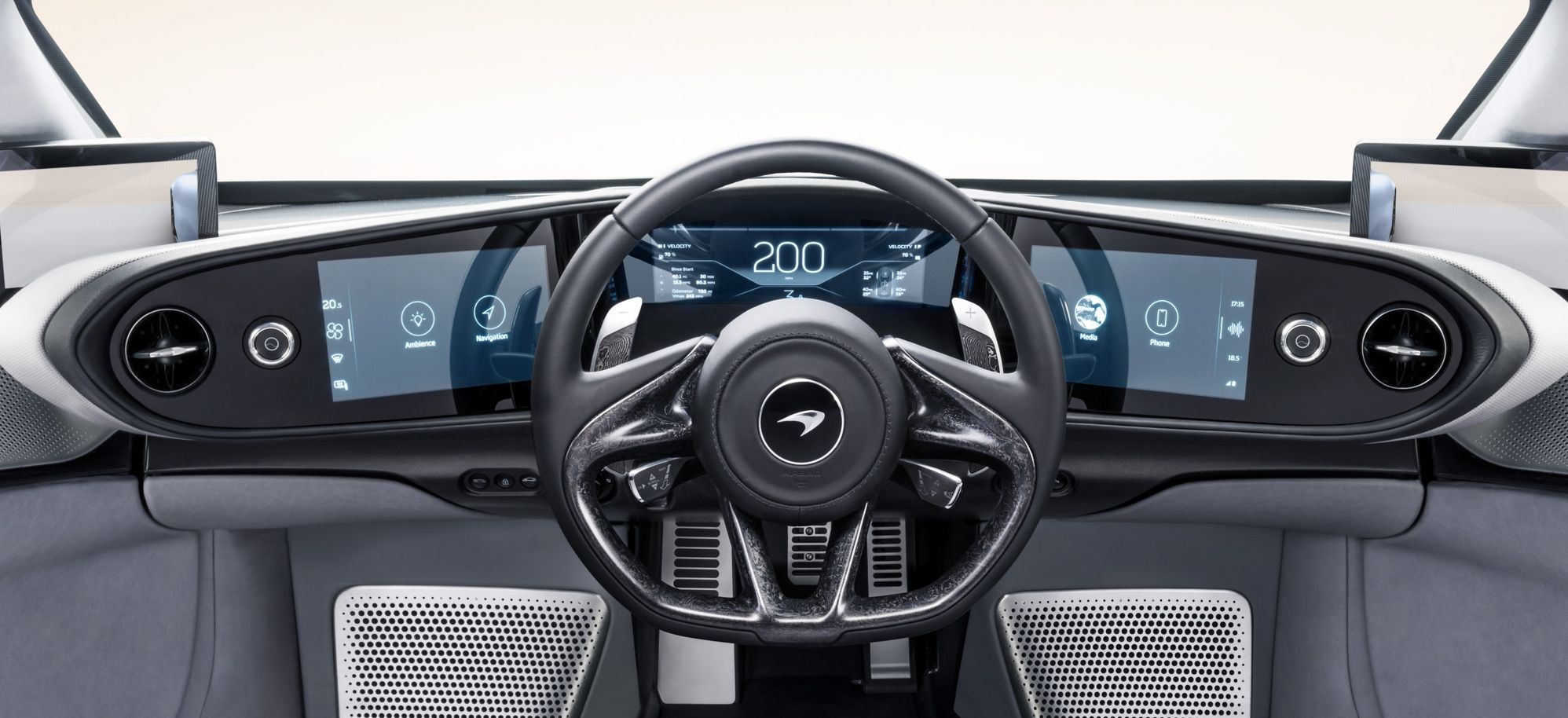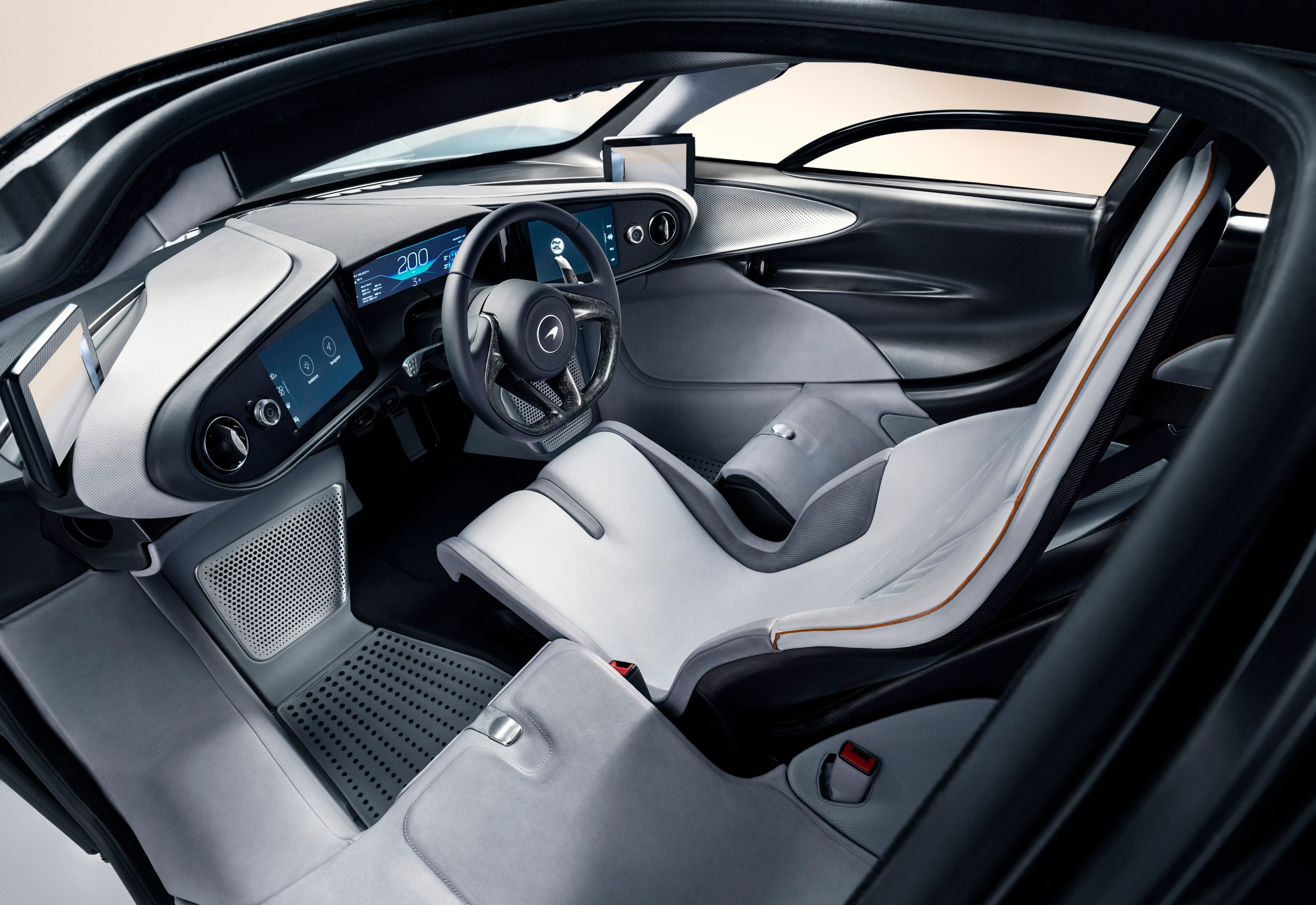The McLaren Speedtail is the latest iteration of the Ultimate Series. Although it follows the Senna, it actually replaced the P1, the spiritual successor of the F1. But unlike the P1, the Speedtail features a three-seat layout with a center-mounted drivers seat, just like the F1. Powered by a hybrid drivetrain, it's the fastest, most powerful, and most aerodynamic McLaren built to date!
Dubbed a Hyper-GT and previously referred to as the BP23, the Speedtail is somewhat of a new concept from McLaren. While it has the output of a hypercar, it looks more like a super-streamline vehicle than a race-inspired supercar and sports a luxurious interior packed with innovative materials. Arguably the coolest thing about it is the central driving seat, a feature borrowed from the iconic F1. It's the ultimate McLaren road car!
Continue reading to learn more about the McLaren Speedtail.
2019 McLaren Speedtail
- Make: Array
- Model: 2019 McLaren Speedtail
- Engine/Motor: V8
- Horsepower: 1035
- Torque: 1000
- [do not use] Vehicle Model: Array
<
2019 McLaren Speedtail Exterior
The Speedtail looks unique, yet familiar. While it longer and sleeker than any other McLaren to date, it retains some of the styling cues seen on the 720S. This is most visible up front, where we can see the same V-shaped nose and slim, angled headlamps, and big cutouts toward the edges of the bumper. However, there are no vents other than the slim openings in the lower apron. Down below, the big splitter made from exposed carbon-fiber boasts an aggressive, V-shaped center section.
Move onto the sides, and that's where you start to notice why the Speedtail is the most aero-efficient McLaren yet. Not only the roof is shaped like a teardrop, but the entire body boasts a similar design.
The rear end is a one-piece clamshell that begins from where the doors meet the body. The design disrupts neither the visual continuity of the body or the flow of air over it. The carbon-fiber front-wheel covers further improve aerodynamics by reducing air turbulence around the wheel arches. Incorporated into the 20-inch, 10-spoke alloy wheels, they remain fixed in position as the wheels rotate. The larger, 21-inch rear wheels don't have covers, but they seem mounted deeper in the wheel arches. What's more, the shape of the doors and the rear fenders route the airflow around them.
Around back, the Speedtail looks simple yet intriguing. Although it lacks a big wing, the deck lid is cleverly shaped to force the air into the spoiler, which creates extra downforce. The supercar also boasts twin ailerons here, which adjust to move the center of pressure and provide the required level of downforce when it is needed most. It also works as an air brake when decelerating and increases stability at high speed.
The fascia is just a narrow section above the massive diffuser. It incorporates very thin taillights and a "McLaren" badge at the center.
Interestingly enough, the Speedtail is also narrower than the McLaren P1. But at the same time is almost half a meter longer, coming in at 5.13 meters from nose to tail. The shape, the dimensions, and the aero features make it the most aero-efficient McLaren road car ever. Given that the British have already unleashed the incredible Senna, a race car of the road, the Speedtail is damn impressive in the aerodynamics department.
2019 McLaren Speedtail Interior
The Speedtail is built around the same Carbon Monocage body structure as the P1 and Senna, but McLaren made extensive modifications to make room for the three-seat layout.
All three seats are decidedly race-inspired, featuring heavy side bolstering and integrated headrests. Not surprisingly, they're made from carbon-fiber. Just like in the F1, the driver's seat is highly customizable. Specifically, if you bought a Speedtail, you need to go to McLaren to have it tailor to your shape and size so you'll feel comfortable at all times.
Get into a Speedtail -- which let's face it, many of us won't get to do -- and you'll feel like in a spaceship. The dashboard is made exclusively of touchscreens, with three big displays stretching almost the entire width of the unit. There's a massive display just in front of the steering wheel, and two slightly smaller screens on each side. The central display shows information on performance and car functions, while the side screens seem to provide access to air conditioning, navigation, and entertainment features.
You'll also notice two more screens, place at each corner, behind the dash. There show images from the fender cameras that act as side mirrors. >
Unlike regular cars, the controls to start the engine, turn on the Active Dynamics Panel and engage Velocity mode -– as well as those to open the windows and doors -– are placed in carbon-fiber panels above the driver’s head. The controls are milled from aluminum, and then hand-brushed and polished. Obviously this design is borrowed from jet fighters and and to the cabin's futuristic design.
Both the door and floor panels look as high-tech as they get. Most McLaren cars are usually either very sporty, while some are race-inspired and almost devoid of convenience features. The Speedtail's cabin is a big step away from that idea. Although it remains loyal to the usual McLaren sportiness, it's decidedly more luxurious in appearance. But even though McLaren covered most surfaces in aniline and lightweight leather, plus plenty of aluminum and carbon fiber, it's not overly plush. It's dramatic and soft at the same time, combining the rugged sportiness of the iconic F1 with a modern premium feel that's not as obnoxious as a Bugatti Veyron or a Rolls-Royce Ghost.
It looks and feels just right!
McLaren paid careful attention to making the Speedtail as comfortable as possible. The seats come wrapped in directional leather that makes it easy to slide into but holds you in place when you drive, while the transparent roof allows plenty of light to enter the cabin. However, if you don't like too much sun, the porthole, glazed upper section of the doors and rear-quarter windows feature electrochromic technology that allows them to independently turn opaque. The top of the windscreen is also made from electrochromic glass, thus eliminating the need for sun visors. Clever!
The full-aniline leather trim on the dashboard and passenger seats is made from fine Scandinavian hides treated to a five-week tanning process using vegetable oils. Of course, you can also order this leather in any desired color. Finally, you can select unique stitch patterns in any color, as well as painted and hand-polished trim edges.
So is there any room for luggage in this supposedly comfortable supercar? Definitely! Both the nose and long tail have room for a few bags. And much like the F1, you can order the Speedtail with a bespoke luggage set that features carbon-fiber, leather, and metalwork matched to the interior specification of the car. Unfortunately, there aren't any luggage compartments in the side fenders and side skirts like the F1 had, but it's still cool that you can carry some stuff.
McLaren went to great lengths to revolutionize the supercar market with the Speedtail and did so by creating new materials starting from carbon-fiber, which the British firm has been using in every car it has built since 1981.
McLaren says it has found a way to combine carbon technology with traditional Italian textile knowledge to develop a "digital loom" process that results in an even lighter material. Called Titanium Deposition Carbon Fiber, it incorporates a micron-thin layer of titanium that gives the material a chrome-effect shimmer. Fused directly into the weave to become an integral part of the carbon's construction, it maintains the strength of the composite and doesn't compromise the structure like traditional methods to change the color of carbon-fiber do.
McLaren used the carbon-titanium weave in the front splitter, rear diffuser, and side skirts. These elements have a transparent finish on the presentation model, but the titanium in the weave can be anodized in any bespoke color or to create interwoven images, symbols or words. One such example is the "McLaren" logo on the rear of the driver’s seat. Of course, you can add images on words on any components made from this material by ordering through McLaren's MSO division.
But that's not all. Just like its predecessor, the P1, the Speedtail features a hybrid drivetrain. But the Speedtail has a battery pack so it doesn't rely on power regeneration only. The system mates the familiar twin-turbo, 4.0-liter V-8 gasoline engine found in the 720S with an electric motor. The British firm recently enlarged the mill from 3.8 to 4.0 liters for the 720S, in which it generates 710 horsepower. The British firm made some changes to the engine and it now cranks out 746 horsepower and 590 pound-feet of torque.
The brand-new electric motor used in this supercar is powerful too. Rated at 308 horsepower and 256 pound-feet of torque, it delivers more power than a hot-hatchback like the Honda Civic Type R or the Ford Focus ST. Combined system output is a whopping 1,035 horsepower and 848 pound-feet of torque. That’s 132 horsepower more than the P1. All told, the Speedtail is the most powerful McLaren ever built.
It's also the fastest, as it hits a top speed of 250 mph in Velocity mode. That’s seven mph more than the F1, the world’s fastest production car before the Bugatti Veyron. It's also 33 mph faster than the McLaren P1 and the Senna.
McLaren says the Speedtail is also the quickest, as it needs only 12.8 seconds to hit 186 mph from a standing start. I say "only" because that’s 3.7 seconds quicker than the P1. No 0-to-60 mph benchmark yet, but it’s safe to assume that the extremely aerodynamic Speedtail gets there in around 2.5 seconds, if not quicker.
Another interesting fact is that the Speedtail can't be driven on electric power only. That's because the electric motor acts directly on the input shaft of the seven-speed dual-clutch gearbox. The motor draws juice from a 115-pound battery placed beneath the fuel tank. This battery is four times more power-dense than the one in the P1 at half the weight. That's solid progress given that the P1 was discontinued in 2015.
The car's much-discussed Velocity more was designed to optimize the powertrain and active aerodynamics to achieve maximum speed. It also lower the car by 1.4 inches. When this happens, the highest point of the vehicle is only 3.7 feet from the road surface. McLaren also unveiled that the Speedtail rides on an aluminum active suspension, bespoke Pirelli P-Zero tires, and that it has carbon-ceramic brakes, but details remain locked in vault for the time being.
Needless to say, the Speedtail’s performance is spectacular, to say the least!
The Speedtail is one of McLaren's most limited vehicles yet, with only 106 units set to leave the assembly line in Woking. The production run is identical to the iconic F1. Pricing starts from £1.75 million plus taxes, which converts to $2.24 million as of October 2018. This is a significant hike from the P1, priced from £866,000 back in the day, and the Senna, priced from £750,000. However, the Speedtail will be built in significantly less units.
But despite the massive price tag, all 106 examples were accounted for before the Speedtail was unveiled to the public. Yes, you'll have to wait for one to show up at an auction event to be able to own the Speedtail.
Given the exclusive and track-focused nature of the Speedtail, there aren't many competitors to talk about. While the Bugatti Chiron is too heavy and not so agile at the race track, the Koenigsegg Agera is no longer in production. This leaves us with the next-generation Ferrari supercar, which will succeed the already iconic LaFerrari. Although nothing more than a rumor and a rendering right now, the LaFerrari successor should sport a wild exterior design with race-inspired features and active aerodynamics. The drivetrain will most definitely feature some sort of electrification, with most hints pointing toward a gasoline V-12 paired to a few electric motors. However, it's not out of the question for Ferrari to create an all-electric supercar. With some modern EVs good for at least 1,000 horsepower, an all-electric Prancing Horse would be more than capable of competing against the McLaren P15. And much like any Ferrari supercar, it will cost a fortune and will become available in very limited numbers. As usual, sales will be restricted to Ferrari owners that already own a handful of Maranello-made sports cars.
Read our speculative review of the Ferrari LaFerrari successor.
McLaren describes the Speedtail as the ultimate road car that "harmonizes sleek and seamless beauty with pioneering technologies and extreme performance." As much as I hate fancy PR talk, I must admit that the description is spot on. The Speedtail is all of the above and then some. Seriously now, when I saw the Senna, I thought that supercars can't get more extreme than that. I'm glad to admit that McLaren proved me wrong with the Speedtail, which is not only more powerful, but more aerodynamic too. Improving aero efficiency is downright difficult without all sorts of wings and spoilers, and McLaren somehow managed to do it with a clever teardrop design and subtle active aerodynamic features.
It's also surprisingly fancy inside the cabin for a McLaren, but it doesn't scream "look at me" in a trivial way. Power? Nothing to complain about really, despite the lack of technical details. Of course, I'm very curious as to what electric motor McLaren designed for this vehicle, but at 1,000+ horsepower, it doesn't matter that much. Once again, McLaren takes performance to a new level and offers unprecedented customization possibilities. To be honest, the only thing that's missing here, and I'm being very picky, is a higher top speed for a potentially new Guinness Book record.
The McLaren Speedtail Sets a New Company Standard that Will Be Hard to Beat
Read our full speculative review on the 2019 McLaren Speedtail.
Read our full review on the 2019 McLaren Senna.
Read our full review on the 2014 McLaren P1
Read our full review on the 1993 McLaren F1
Updated 08/07/2017: We created a rendering for the upcoming McLaren P15 supercar. Check the exterior section for more details on it.
2019 McLaren Speedtail New Carbon-Fiber Technology
2019 McLaren Speedtail Drivetrain
2019 McLaren Speedtail Prices
2019 McLaren Speedtail Competition
Ferrari LaFerrari successor
Conclusion
Further reading
Update History


